An official website of the United States government
Official websites use .gov A .gov website belongs to an official government organization in the United States.
Secure .gov websites use HTTPS A lock ( Lock Locked padlock icon ) or https:// means you've safely connected to the .gov website. Share sensitive information only on official, secure websites.
- Publications
- Account settings
- Advanced Search
- Journal List

Uncovering the Benefits of Participatory Research: Implications of a Realist Review for Health Research and Practice
Justin jagosh, ann c macaulay, pierre pluye, jon salsberg, paula l bush, jim henderson, erin sirett, margaret cargo, carol p herbert, sarena d seifer, lawrence w green, trisha greenhalgh.
- Author information
- Article notes
- Copyright and License information
Address correspondence to: Justin Jagosh, Women's Health Research Institute, BC Women's Hospital and Health Centre, AB319–4500 Oak Street, Vancouver, BC, Canada, V6HS3N1 (email: [email protected] ).
Issue date 2012 Jun.
Participatory research (PR) is the co-construction of research through partnerships between researchers and people affected by and/or responsible for action on the issues under study. Evaluating the benefits of PR is challenging for a number of reasons: the research topics, methods, and study designs are heterogeneous; the extent of collaborative involvement may vary over the duration of a project and from one project to the next; and partnership activities may generate a complex array of both short- and long-term outcomes.
Our review team consisted of a collaboration among researchers and decision makers in public health, research funding, ethics review, and community-engaged scholarship. We identified, selected, and appraised a large-variety sample of primary studies describing PR partnerships, and in each stage, two team members independently reviewed and coded the literature. We used key realist review concepts (middle-range theory, demi-regularity, and context-mechanism-outcome configurations [CMO]) to analyze and synthesize the data, using the PR partnership as the main unit of analysis.
From 7,167 abstracts and 591 full-text papers, we distilled for synthesis a final sample of twenty-three PR partnerships described in 276 publications. The link between process and outcome in these partnerships was best explained using the middle-range theory of partnership synergy, which demonstrates how PR can (1) ensure culturally and logistically appropriate research, (2) enhance recruitment capacity, (3) generate professional capacity and competence in stakeholder groups, (4) result in productive conflicts followed by useful negotiation, (5) increase the quality of outputs and outcomes over time, (6) increase the sustainability of project goals beyond funded time frames and during gaps in external funding, and (7) create system changes and new unanticipated projects and activities. Negative examples illustrated why these outcomes were not a guaranteed product of PR partnerships but were contingent on key aspects of context.
Conclusions
We used a realist approach to embrace the heterogeneity and complexity of the PR literature. This theory-driven synthesis identified mechanisms by which PR may add value to the research process. Using the middle-range theory of partnership synergy, our review confirmed findings from previous PR reviews, documented and explained some negative outcomes, and generated new insights into the benefits of PR regarding conflicts and negotiation between stakeholders, program sustainability and advancement, unanticipated project activity, and the generation of systemic change.
Keywords: Participatory research, action research, realist review, systematic review, partnership synergy theory, community-based participatory research
Participatory research (PR) is the co-construction of research between researchers and people affected by the issues under study (e.g., patients, community members, community health professionals, representatives of community-based organizations) and/or decision makers who apply research findings (e.g., health managers, policymakers, community leaders). For health intervention research, proponents argue that PR strengthens relations between the community and academia; ensures the relevancy of research questions; increases the capacity of data collection, analysis, and interpretation; reduces the “iatrogenic” effects of research; and enhances program recruitment, sustainability, and extension ( Cargo and Mercer 2008 ; Israel et al. 1998 , 2005 ; Macaulay et al. 1998 ; O’Fallon and Dearry 2002 ). PR is believed to increase communities’ capacity to identify and solve their problems ( Gaventa and Cornwall 2006 ; Macaulay et al. 1999 ) and decision makers’ and service providers’ ability to mobilize resources, improve policies, and enhance professional practices ( Minkler and Wallerstein 2008 ). Previous reviews sought to understand PR and provide practical recommendations ( Cargo and Mercer 2008 ; Green et al. 1995 ; Ismail 2009 ; Israel et al. 1998 ; Trickett and Ryerson Espino 2004 ; Waterman et al. 2001 ) and to assess the value of PR to research goals, health status, and systems change ( Arble and Moberg 2006 ; Boote, Telford, and Cooper 2002 ; Gaventa and Barrett 2010 ; Kreuter, Lezin, and Young 2000 ; Roussos and Fawcett 2000 ; Viswanathan et al. 2004 ). Nonetheless, the assessment of outcomes remains weak ( Berkowitz 2001 ; Gaventa and Barrett 2010 ; Viswanathan et al. 2004 ; Wallerstein et al. 2008 ), partly because the methodologies used have generally failed to embrace the complexity of programs or address mechanisms of change ( Macaulay et al. 2011 ).
The main challenge in evaluating PR is that it is, by nature, a research approach that can be applied to an array of interventions encompassing a multitude of research paradigms, methodologies, and methods. This requires distinguishing analytically between the benefits of co-governance for research processes and the benefits of the research program itself (i.e., the research's health change goals). Isolating these two influences at an empirical level makes it difficult to attribute outcomes to the participatory process or some other contextual or design features. To handle such complexity, we chose a realist approach ( Pawson 2006 ) because it provides a rationale and tools for synthesizing complex, difficult-to-interpret evidence from community-based programs. A realist review differs from empirically focused qualitative or quantitative methods in a number of ways, including its theory-driven and abductive (informed-intuitive) approach to understanding context, mechanism, and outcome (CMO) configurations. Using this method, our synthesis concentrated on the impact of co-governance on research processes and outcomes. We synthesized qualitative and quantitative research outcomes pertaining to the health change goals of PR partnerships only when (and to the extent that) such evidence could be clearly linked to participatory processes.
Our three research questions were revisited during the review and were updated as the review parameters were shaped. The final questions were as follows:
What benefits and/or constraints emerge from the collaborative undertaking of health-related research by researchers and those affected by the issues under study and/or those who would apply research results?
How can the collaborative research process be theorized and evaluated?
How do variations in the program's context and mechanisms influence the process and outcomes of collaborative health intervention research?
The research team was made up of a core team at McGill University (A.C. Macaulay [ACM], J. Jagosh [JJ], P. Pluye [PP], J. Salsberg [JS], J. Henderson [JH], P.L. Bush [PLB], and E. Sirett [ES]) as well as an international network of researchers (G. Wong [GW], M. Cargo [MC], T. Greenhalgh [TG], C.P. Herbert [CPH], and L.W. Green [LWG]) and six decision-making partners from granting agencies, public health organizations, an ethics board, and a community-engaged scholarship organization (see Jagosh et al. 2011 for more detail). The first stages of the review involved filtering and retaining a data set from the published PR literature using a series of identification, selection, and appraisal steps. Our chosen unit of analysis was partnerships—that is, coalitions of academic and community stakeholders with equitable co-governing powers who planned, implemented, and evaluated PR health interventions. Each stage of review involved at least two independent reviewers and followed a systematic, auditable coding and retention procedure. We identified 7,167 abstracts from the literature and selected 591 full-text papers. At the end of the selection, we retained 83 partnerships and contacted the lead authors from these partnerships to make sure that we had a comprehensive set of documents for each study. Thirty-two authors (39%) responded to complete the sets for their respective partnerships. After passing the publications though an appraisal process, a final sample of studies suitable for realist review remained: 23 partnerships, collectively composed of 276 documents, including peer-reviewed and non-peer-reviewed publications and websites that reported on empirical research, activity descriptions, and authors’ reflections (see appendix for more detail). The partnerships included were those describing high levels of participation by nonacademic stakeholders. This meant that we retained only those partnerships demonstrating that all partners (1) identified or set the research questions; (2) set the methodology, collected data, or analyzed the data; and (3) used or disseminated the research findings (this requirement was loosely applied after consulting our co-investigators with expertise in PR, as it was felt that publication often preceded use and that community stakeholder participation in dissemination is often not described). Please see our protocol study paper for further information about our identification, selection, and appraisal tools ( Jagosh et al. 2011 ). We found evidence of PR's impact by using the realist concepts of middle-range theory, context-mechanism-outcome configurations (CMO), and demi-regularity, which are described in box 1 .
Definition of Terms Used in Realist Reviews
Middle-range theory (MRT): MRT is an implicit or explicit explanatory theory that can be used to assess programs and interventions. “Middle-range” means that it can be tested with the observable data and is not abstract to the point of addressing larger social or cultural forces (i.e., grand theories).
Context-mechanism-outcome (CMO) configurations: CMO configuring is a heuristic used to generate causative explanations pertaining to the data. The process draws out and reflects on the relationship of context, mechanism, and outcome of interest in a particular program. A CMO configuration may pertain to either the whole program or only certain aspects. One CMO may be embedded in another or configured in a series (in which the outcome of one CMO becomes the context for the next in the chain of implementation steps). Configuring CMOs is a basis for generating and/or refining the theory that becomes the final product of the review. A simple example of a CMO configuration is as follows: A community experiences a high level of unemployment to which an employment training program is offered (context). But the program has low enrollment and attrition (outcome). The reason is that people have difficulty getting to the venue, owing to a lack of public transportation (mechanism).
Context: Context often pertains to the “backdrop” of programs and research. For example, in our work it pertains to the conditions connected to the development of research partnerships. As these conditions change over time, the context may reflect aspects of those changes while the program is implemented. Examples of context include cultural norms and history of the community in which a program is implemented, the nature and scope of existing social networks, or built program infrastructure. They can also be trust-building processes, geographic location effects, funding sources, opportunities, or constraints. Context can be broadly understood as any condition that triggers and/or modifies the behavior of a mechanism.
Mechanism: A mechanism is the generative force that leads to outcomes. It often but not always denotes the reasoning (cognitive or emotional) of the various actors in relation to the work, challenges, and successes of the partnership. Mechanisms are linked to, but not synonymous with, the program's strategies (e.g., a strategy may be a rational plan, but a mechanism involves the participants’ display of responses to the availability of incentives or other resources). Identifying the mechanisms advances the synthesis beyond describing “what happened” to theorizing “why it happened, for whom, and under what circumstances.”
Outcomes: Outcomes are either intended or unintended and can be proximal, intermediate, or final. Examples of PR outcomes are greater empowerment, participation, enrollment, education, knowledge, development of program infrastructure, and enhanced research processes. Examples of intervention outcomes are improved health status, increased use of health services, and enhanced research results.
Demi-regularity: Demi-regularity means semipredictable patterns or pathways of program functioning. The term was coined by Lawson (1997 ), who argued that human choice or agency manifests in a semipredictable manner—“semi” because variations in patterns of behavior can be attributed partly to contextual differences from one setting to another.
The synthesis was carried out in a number of iterative steps (Jagosh et al. 2011), all of which were led by Dr. Jagosh, who has fifteen years’ experience in qualitative research and a doctorate in communication studies. The steps were overseen by the larger team through consensus-building meetings, phone calls, and email discussions (thirteen key consensus-building meetings were held between October 2009 and May 2011). First, we extracted data from all documents that described how the co-governance of research led to certain outcomes. These outcomes had to do with either the process of building research or the research products and goals reached. These data were then organized into themes, representing semipredictable patterns occurring in the data (referred to as demi-regularities; see box 1 ). Having gained insight into the PR outcomes from this thematic organization, we mapped the partnerships visually in order to understand these outcomes in the context of the chronology of partnership events and processes and to ensure that we did not miss any data. The maps provided a picture of the scope and accomplishments of each partnership and enabled us to better understand how various outcomes of co-governance within a single partnership were interrelated. The data depicting outcomes of co-governance were then articulated in terms of context-mechanism-outcome (CMO) configurations and embedded in these maps. After the core team members reviewed, refined, and approved the maps, the CMO configurations were organized according to the list of demi-regularities and disseminated to the wider team and decision-making partners for their approval. From that process, our original list of demi-regularities were refined and expanded. Finally, we applied our middle-range theory (discussed later) to the synthesis, which further refined our understanding of the demi-regularity and CMO synthesis. The final synthesis reported here is a subset of a much larger (seventy-page) unpublished synthesis, from which we chose the clearest and most relevant examples for publication. To explain the PR outcomes, each CMO is accompanied by a referenced quotation from the data.
Middle-Range Theory: Partnership Synergy
Central to any realist synthesis is developing and refining candidate theories that correspond to the given area of investigation. Often, theory is incorporated at the beginning of the review and informs the development of the protocol ( Pawson 2006 ). For this review, we searched for candidate middle-range theories at the outset, but because of the sample's heterogeneity, we did not determine until after the identification, selection, and appraisal stages were complete which theory would be best applied. Selecting the appropriate theory was thus a process that we repeated as we moved through the review stages. We searched the literature extensively and examined writings on, for example, capacity building ( Goodman et al. 1998 ), critical consciousness ( Freire 1970 ), health promotion ( Green et al. 1995 ), social capital ( Coleman 1988 ), participation ( Green 1986 ), and management (Hibbert, Huxham, and Ring 2008 ). During our synthesis, we reviewed and chose the theory of “partnership synergy” as our middle-range theory for its applicability to our heterogeneous data set and utility in conceiving PR outcomes. Lasker, Weiss, and Miller (2001 , 184) defined synergy as combining the perspectives, resources, and skills of a group of people to “create something new and valuable together—a whole that is greater than the sum of its individual parts.” Applied to participatory health interventions, the theory holds that multiple stakeholder collaboration creates or enhances research outcomes beyond what could be achieved by a single person or organization working under similar conditions. Using this theoretical concept, we hypothesized that equitable partnerships, with the stakeholders’ participation throughout the project, succeed largely through synergy. However, partnerships are not, de facto, synergistic and can at times be antithetical to synergistic exchange, especially with multiple partners in coalitions ( Green 2000 ; Jordan 2003 ; Kothari and Cooke 2001 ). In addition, synergy increases with the convergence of complementary or blended perspectives through the alignment of values and goals as co-governing members work together. This reveals what we see as the main mechanism of participation: PR stakeholders’ recognizing and valuing the collective knowledge, resources, relationships, and capacity through the alignment of purpose, values, and goals. Once established, such an alignment becomes a feature of the research context in which partnerships operate. Through the use of partnership synergy as a middle-range theory, we tested three broadly generalizable hypotheses concerning the potential benefits of PR:
Hypothesis A: Contextual factors existing before the partnership was formed partially determine the extent to which PR can enhance research outcomes.
Hypothesis B: The synergy generated through multistakeholder collaboration, bringing diversity of perspective and skills, advances the research capacity beyond what could be achieved by a single stakeholder group working toward the same goals.
Hypothesis C: Partnership synergy has cumulative effects (i.e., builds momentum, strength, mutual trust, and understanding) over time, so that a PR outcome at one stage of research will influence subsequent stages.
Regarding hypothesis A, the evidence from the published literature was too varied to observe consistent links between the contextual factors existing before partnership formation and the PR outcomes. Thus the findings reported here correspond to hypotheses B and C. Box 2 lists the demi-regularities and subcategories that we identified as connecting the data to our middle-range theory and hypotheses. These lists contain the evidence we saw recurring in the twenty-three partnerships. In the next sections, we offer examples from the data that present CMO configurations pertaining to each of the demi-regularities. In each of the following subsections, although the findings are illustrated with only a single example, other examples of each were evident in our data set. The appendix provides additional information about the twenty-three partnerships used in the synthesis.
Demi-Regularities Pertaining to What PR Synergy Generates (Supporting Hypothesis B) and How It Accumulates (Supporting Hypothesis C)
Demi-regularity 1 (Hypothesis B)
PR generates culturally and logistically appropriate research characteristics related to
Shaping the scope and direction of research.
Developing program and research protocols.
Implementing program and research protocols.
Interpreting and disseminating research findings.
Demi-regularity 2 (Hypothesis B)
PR generates capacity to recruit
Community members to the advisory board.
Community members for implementation (specifically for lay health worker programs).
Community members as recipients of programs (intervention enrollment).
Demi-regularity 3 (Hypothesis B)
PR generates the capacity of
The community partners.
The research partners.
Demi-regularity 4 (Hypothesis B)
PR generates disagreements between the co-governing stakeholders during decision-making processes, resulting in both
Positive outcomes for subsequent programming.
Negative outcomes for subsequent programming.
Demi-regularity 5 (Hypothesis C)
PR synergy accumulates in cases of repeated successful outcomes in partnering, thus increasing the quality of outputs and outcomes over time.
Demi-regularity 6 (Hypothesis C)
Partnership synergy accumulates capacity to sustain project goals beyond funded time frames and during gaps in external funding.
Demi-regularity 7 (Hypothesis C)
PR generates systemic changes and new unanticipated projects and activity.
Culturally Appropriate and Logistically Sound Research
Synergy created in partnerships tended to generate research that was both culturally appropriate to the target group(s) and logistically realistic and feasible, taking account of the practical challenges of conducting research in community settings.
Shaping the Scope and Direction of Research
Partnering typically shaped the scope and direction of the research to areas deemed relevant by all parties. For example, when deciding on a research topic, Seattle Partners for Healthy Communities gave significant control to community partners. Consensus building created a community-relevant research agenda and also built trust among the stakeholders:
After 2 years of committee work, staff reviews of current literature, and group discussions that drew on board members’ own experiences in health promotion and community change processes, the Community Board agreed that a focus on the “social determinants of health” captured their broader concerns with the multiple factors that affect the well-being of communities. ( Eisinger and Senturia 2001 , 524)
The coalition members acknowledged widespread problems associated with community-based research, particularly research conducted in communities of color by predominantly white researchers (context). They demonstrated sensitivity (mechanism) to this history of mistreatment and, through mutual respect (mechanism), used their collective expertise to identify a locally relevant research agenda (outcome).
Developing Program and Research Protocols
In the Ramah Navajo Mammography Days partnership the community coalition members overcame barriers in planning the intervention by using their insider knowledge and preexisting resources:
System networking was initiated through the coordination of meetings between the coalition and the staff from the regional hospital where mammograms are performed and Ramah Navajo women are eligible for services (90 round-trip miles from the community) …. One significant outcome of the first meeting was a willingness of the hospital staff to set aside 1 day every other month to accommodate 12 mammography appointments for Ramah Navajo women …. This networking also succeeded in encouraging members of the Women's Health program at the hospital to join the project coalition and attend future meetings to troubleshoot and brainstorm new ideas and strategies, thus broadening stakeholder participation and resource mobilization to increase community capacity. ( English et al. 2006 , 402)
Barriers to program implementation included distance from hospital resources to obtain mammograms (context). Coalition and hospital staff recognized their common health promotion goals and the merit of the project (mechanism). As a result, the hospital made accommodations to “bolster local infrastructure to increase access to mammography services” (English et al. 2006, 396) (outcome). In addition, membership of the coalition board expanded (outcome).
Implementing Program and Research Protocol
Community involvement also enabled culturally and logistically appropriate data collection. For example, in the East Side Village Health Worker Partnership, through their familiarity with and sensitivity to local issues, community members who were hired to conduct the block listing for the survey were able to overcome cultural and logistical barriers to survey implementation: “Community residents who participated in the block-listing process contributed invaluable knowledge of the community by locating hard-to-find units, accessing apartment buildings, explaining the presence of university participants to community members, and offering practical guidance on safety-related concerns” ( Schulz et al. 1998 , 17). According to one steering committee member, “The 81% response rate on the survey is a result of those efforts … which helped to increase community understanding of, and support for, the survey itself” ( Schulz et al. 2001 , 552).
The community's general mistrust of academic researchers (context) and socioeconomic challenges (context) led to the community's resistance or reluctance to getting involved in the research. Accordingly, the coalition members valued and used local knowledge (mechanism) to increase the residents’ trust in the research process and overcome access barriers (outcome) and generate a high-quality survey (outcome).
Interpreting and Disseminating Findings
Partnership structures created opportunities for interpreting and disseminating research findings to enhance the mutual understanding of results and modify future research. The Kahnawake Schools Diabetes Prevention Project exemplifies how a community advisory board was able to translate scientific data into comprehensible research findings for dissemination to the wider community. The accessibility of the community's presentations led to further interpretations of the results by the community, which were incorporated into the research project:
Additional explanations for the increase in adiposity, which were suggested by residents in a series of local meetings to return research results to the community include increased overall community wealth and disposable income over the past decade combined with increasing availabilities of fast-food restaurants in the areas surrounding the reserve; increased proportion of families in which both parents work and are less available for supervision of children's meals and leisure activities; perceived importance, within the community, of computer literacy for youth. Longitudinal results for physical fitness are congruent with a reported decrease in physical education classes in 1 of the 2 schools in the intervention community during the period of 1994–1996. ( Paradis et al. 2005 , 337)
As a result of the long-term collaborative relationships between academic and community stakeholders (context), locally informed and accessible scientific study findings were presented to the community. The audiences at the presentations felt comfortable and safe participating in the context of their community ownership of the project (mechanism) and made sense of the data in their own terms. As a result, new explanatory insights into the data were generated (outcome).
PR Generates Recruitment Capacity
We found evidence of partnership synergy in generating recruitment capacity in three areas: (1) recruitment to steering committees and advisory boards, (2) recruitment for program implementation (i.e., lay health workers), and (3) recruitment of respondents to interventions and research projects.
Recruitment of Community Members to Advisory Boards
In Messengers for Health, recruitment to the advisory board was accelerated by the good reputation and connectedness of an initial community partner:
The initial partnership in Messengers for Health proved critical in gaining the trust of extended community partners because A.K.H.G.M. [an initial community partner … and a parent who lost a child to cancer] is a member of the tribe, is fluent in her language, and is a well-respected individual in the community. At an interview training session one year into funding, community women stated that they were interested in the project because this person was involved. ( Christopher et al. 2008 , 1402)
Although community members had reason to mistrust outside researchers (context), they felt willing to participate because they trusted (mechanism) the judgment of a well-respected and long-standing community member who was already involved. Trust, respect, and consequent synergy were established from this initial partnership, propelling subsequent stages of program planning (outcome).
Recruitment of Community Members for Implementation of Program and Research Protocol (Specifically for Lay Health Worker Programs)
In Messengers for Health, Christopher and colleagues also demonstrated how PR facilitated the recruitment of participants to implement programs. In this case, a nomination process by the community coalition members enhanced the recruitment of lay health workers (LHWs) from the community: “Community women, who were already known to be knowledgeable, sincere, compassionate and understanding were nominated as LHWs. This ensured the success of the program” ( Christopher et al. 2007 , 3). Community coalition members knew the community well (context). The coalition valued (mechanism) this knowledge and preexisting relationships, and as a result, community members who were already known to have qualities that would make a good lay health worker were nominated (outcome). The participants’ trust and safety increased as a result of this careful selection process (outcome).
Recruitment of, and Outreach to, Intervention Participants
Recruitment also facilitated the enrollment of participants. This included the highly vulnerable population of the Complementary Medicine at the End of Life Project, which was a randomized controlled trial to investigate the role of meditation and massage in end-of-life care:
The complex social, emotional, financial, and medical web that envelopes people at the end of life often forces nonessential commitments, such as participating in medical research, to be rejected …. Two senior Leeway nursing staff members, known to and trusted by the residents, were responsible for inviting residents to participate in the study and for obtaining informed consent. [They] took the time to personally introduce the … staff to each participant at enrolment, tacitly endorsing their involvement with the residents …. The strategy resulted in 97% participation of eligible residents. ( Williams et al. 2005 , 92, 96)
Despite the difficult experiences at the end of life (context), residents at the facility felt safe (mechanism) participating, with the assurance of the endorsement from the nursing staff, which generated very high enrollment (outcome).
PR Develops Capacity and Competence of Stakeholders
Partnership synergy resulted in the greater capacity and competence of both researchers and community stakeholders. Capacity and competence are related terms, in that capacity embraces the concept of readiness, whereas competence is how skillfully that capacity is applied to further community or individual goals ( Goodman et al. 1998 ). Community stakeholders gained research knowledge and skills, which became assets for program planning and implementation. As a by-product, their collaborative experiences also led to more education and employment opportunities. Academic stakeholders gained capacity and competence from working with community partners to heighten their awareness of community issues and to cultivate the attitude, knowledge, and skills needed for partnering. Three outcomes resulted from the expansion of stakeholder capacity and competence: (1) benefits for the program through the growth of expertise, (2) benefits for other community projects and activities, and (3) benefits for personal and professional career development.
Increased Capacity of the Community Partners
In Poder es Salud/Power for Health, community health workers experienced a growth in professional skills associated with their participation in the project, leading to personal development and professional opportunities:
Community Health Workers (CHWs) mentioned their participation on the Steering Committee increased their knowledge of research. Additionally, the CHWs strengthened their professional skills, including computer skills, language skills, and meeting, planning and facilitation skills through their involvement with all aspects of the project …. The CHWs felt empowered by their role with the project, and a few of the CHWs sought additional training and similar CHW positions when the project funding ended. ( Farquhar et al. 2008 , 5)
The partnership offered formal and informal opportunities for training (context) that CHW recognized and valued (mechanism), which resulted in a sense of empowerment (outcome) and a search for additional training and employment positions (outcome).
Increased Capacity of the Academic Partners
In Project Bridge the academic partners acquired skills in collaborating: “Perhaps of greatest significance, faculty learned key skills in negotiating and collaborating with community-based organizations. This led to increased ability to appreciate and value the credibility of community stakeholders as authorities” ( Marcus et al. 2009 , 355). The partnership provided opportunities and experiences for academic partners to learn how to collaborate (context), which they valued (mechanism), resulting in their developing new and informed perspectives on community knowledge and leadership (outcome). In Witness for Wellness, the academic coalition demonstrated a willingness to relinquish control, became aware of their limitations, and learned how to collect community-based data:
The process [of collaborating] helped the academic partners understand the limitations of their expertise when designing evaluations for a community-based intervention … and community input allowed for creation of culturally appropriate and culturally meaningful evaluation …. The academic members of TW [Talking Wellness] learned to collect data effectively in community settings they would have never considered before the collaboration. ( Chung et al. 2006 , S1–75)
Again, the partnership provided the opportunity for increasing academic capacity and competence (context), which the researchers recognized and valued (mechanism), resulting in new awareness and skill in relating to community and enhancing data collection (outcome).
PR Generates Disagreements between the Co-Governing Stakeholders during Decision-Making Processes, Resulting in Both Positive and Negative Outcomes for Subsequent Program Planning
The East Harlem Diabetes Center for Excellence demonstrated how the initial partnering process resulted in a radical shift in the direction of research. In the early stages of partnership formation, the academic coalition leader's idea for research was rejected outright by the community members. The partnership was able to proceed after coming to consensus on a completely different agenda:
The coalition's leader proposed a patient survey that focused on patient satisfaction with clinical encounters. This suggestion appeared to raise the level of mistrust in the coalition, because some members did not see the relevance of the proposed questions and were uncertain about how the data would be used …. In response to members’ growing disinterest in, and dissatisfaction with the current coalition activities, and lack of group cohesion, coalition leaders asked members to articulate their vision for the Center of Excellence. Most members expressed their interest in shifting the focus of the coalition away from provider sites and toward the East Harlem community. (Horowitz, Williams and Bickell 2003 , 543)
Stakeholders had no prior history together and lacked established trust in the group (context). Academic researchers were also unaware of community interests (context). By recognizing the value of coming to consensus on a research focus (mechanism), the researchers were able to create a change in direction and a new agenda to focus on health promotion/disease prevention efforts in the community (outcome). New trust was built among coalition members from the consensus-building process (outcome).
Negative Outcomes
In the Complementary Medicine at the End of Life Project, a randomized control trial was conducted under the guidance of a coalition comprising community residents, clinical staff, and academic researchers. Despite the high enrollment (owing to the presence of staff and residents on the steering committee), the control group was dissatisfied with the randomization, an issue that was never resolved:
Once the initial cohort had a favorable study experience, they provided informal endorsement via the “grapevine” among the community, further fueling the sense of injustice among those who were ineligible or in the control group. The researchers had particular difficulty translating the concept of randomization to the participants in the control group … several members of the control group felt cheated out of the intervention …. All of the collaborating partners met to discuss how best to address the inequity and betrayal felt among those excluded from the intervention. Various approaches … were considered, including providing a delayed intervention and/or subsidizing limited access to meditation and massage for all residents. After extensive deliberation … it became clear that addressing the residents’ perceived needs would involve a compromise of the randomized controlled methodology or a need for additional funding support. The former was not acceptable to the research partners, and the latter option was pursued unsuccessfully …. As a gesture of good will, and as an expression of gratitude from the academic researchers to the non participants, a desk top computer was provided to the common area at Leeway. ( Williams et al. 2005 , 99–100)
The palliative care setting was a highly sensitive environment (context). During the research-planning stage, the coalition decided to use experimental design methodology for the research (context). Despite signing consent forms, once the study began, the control group participants felt excluded (mechanism) from a potentially beneficial treatment that included massage and meditation. The issue was partially addressed through a gesture by the researchers in light of the residents’ negative feelings toward the partnership (outcome).
The Chicago HIV and Mental Health Project offers an example of harm to the recruitment process when the community coalition members were not consulted on key hiring decisions:
Without the direct input of community members, the university's staff interviewed one individual for the role of community co-facilitator …. After the new facilitator missed several meetings … it was revealed that the facilitator had been arrested for drug involvement and was incarcerated. Community members had been aware of this individual's problems with drugs …. This incident illustrated one of the potential benefits of community members’ involvement: knowledge of the community that can be used to enhance the integrity and quality of the research. It also illustrated the schism that exists between the principle and practice of a collaborative approach. Although the university was, in principle, committed to the idea of collaboration, in practice, it retained power and influence over certain key decisions. Likewise, although the community assented to engagement in a collaborative research partnership, at the practical level, they were still mistrustful about the university's credibility and intent. ( Baptiste et al. 2005 , 380–81)
There was a lack of integrated collaboration at this point in the partnership, when the decision-making processes had not yet been defined (context). This led the research staff to feel it was appropriate to make a unilateral decision in a key hiring (mechanism). Their failure to use the insiders’ knowledge resulted in an inappropriate hiring decision and consequent disruption to the program (outcome).
PR Synergy Accumulates in Cases of Repeated Successful Outcomes in Partnering, Thus Increasing the Quality of Outputs and Outcomes over Time
Our realist analysis provided evidence that synergy has the potential to build over time when the partnership's activities repeatedly produce successful outcomes. This evidence was synthesized by identifying the outcome of one CMO configuration as forming part of the context in the next phase of research along a chain of planning and implementation stages—what we call a “C 1 M 1 O 1 -C 2 ” pattern, in which outcome 1 becomes a contributor to context 2 . This demonstrates how partnerships alter elements of context over time, leading to enhanced outputs and outcomes. For example, in the East Baltimore Asthma Prevention Program ( Swartz et al. 2004 ), the careful design of participatory processes from the outset led to greater synergy and incrementally positive outcomes for a community-based clinical trial, which can be seen in the following quotations:
There were concerns [by academic stakeholders] that conducting a complex clinical trial requiring structured outcome collection and adherence to study regimens in a community of families that frequently moved and changed telephone numbers might not be possible. (p. 164) With the encouragement of the CAB [community advisory board] to promote acceptance and the establishment of an open, honest two-way relationship between participants and the study, the entire community staff was [chosen to be] African-American and either lived or had lived in the community or had previous work experience in research or education in the community. (p. 158) They [community staff] attended community meetings, participated in community health fairs, and helped families with social problems outside the scope of the study. Their roles in the study extended beyond their research duties and into the community. This provided them with a larger purpose, making them more enthusiastic and invested in the study. Also, because they were so intensely involved in the community, their research jobs were easier. (p. 164) Ultimately we believe it was the strength of the personal relationships with the study staff that kept participants engaged in the study. (p. 165) Through close interaction with the community, staff members sometimes were made aware of families interested in participating but whose children had not been through the school-based asthma education program. As a result, an alternate method of recruitment was developed. (p. 159) We were pleased that we were able to enroll a high percentage of eligible families and, despite a high rate of changes in living arrangements, had such a high retention rate. We believe this was due primarily to the trust created by the overall project and the people working for the project. As the study unfolded, we learned a great deal about ways to keep families engaged. When we encountered follow-up problems, possible courses of action were discussed with field staff and strategies developed. (p. 164)
Barriers to conducting a randomized community trial included community resistance and the demands placed on them given the complex and structured research protocol (context 1 ). A decision was made at the outset to hire only African-Americans familiar with the community as project staff (context 1 ). Because of their prior history in the community, the project staff were glad to assist community members beyond the scope of the study (mechanism 1 ). This led to the staff's greater investment in the project (outcome 1 → context 2 ). The staff's deepening investment increased the community members’ trust in the project (mechanism 2 ), resulting in closer interactions between the project staff and the community members (outcome 2 → context 3 ). Because of the greater sense of trust and safety (mechanism 3 ) due to the previously described trust-building processes, some participants revealed their desire to enroll in the project even though their children had not participated in the school-based asthma program (outcome 3 ). This led to new methods of recruitment being developed (outcome 3 → context 4 ), and new recruitment methods led to higher than expected enrollment (context 4 ). This added to the project stakeholders’ desire to overcome attrition obstacles (mechanism 4 ). As a result, a new capacity to retain participants and prevent attrition in a complex clinical trial was created in a mobile population by addressing problems as they arose and through the project stakeholders’ increasing sense of motivation, trust, and co-ownership of the project (outcome 4 ).
Partnership Synergy Accumulates Capacity to Sustain Project Goals beyond Funded Time Frames and during Gaps in External Funding
Funding gaps in community-based programs are common. We encountered examples in which partnership synergy had made it possible to sustain programs despite such gaps. For example, in the WORD Faith-Based Weight-Loss Program, lay health workers and church groups involved in the project strengthened their ties to enhance their work on obesity prevention efforts even after the intervention had been completed:
The use of the lay health advisor model enhanced the possibility of program sustainability through building on natural social networks within the faith community in an economical way. From the program, pre-existing networks were strengthened and new ties were formed. In-depth interviews with WORD Leadership team members revealed evidence of greater community cohesiveness, particularly between churches that had not interacted with each other in a considerable way before. ( Hye-cheon et al. 2006 , 647)
The involvement of trained lay health workers and church groups who implemented the weight-loss intervention gained leadership and expertise on weight-loss issues affecting their community (context). They felt inspired (mechanism) to continue working for this cause after the project ended, resulting in strengthened ties with one another and other church organizations (outcome).
Synergy generated from successful outcomes early in partnership activities also made it possible to sustain programs despite gaps in external funding. For example, in the Kahnawake Schools Diabetes Prevention Project (KSDPP), community buy-in after initial project successes generated critical bridge funding:
KSDPP was implemented in an era of scarce research funding and needed to find new funding sources after the first three-year research grant ended. Due to early success of the project and high level of community support, three community organizations chose to continue funding for one year …. The following two years … were funded by private foundations combined with community contributions. This critical period of bridge funding allowed KSDPP to continue, and two years later the team was well positioned to apply for innovative national research grant monies designated for university-community partnerships, which led to five years of infrastructure funding. ( Macaulay et al. 2006 , 13)
Despite the scarcity of funding sources (context) and because of the project's early success (context), as well as widespread concern about the implications of diabetes for children in the community (context), the community members wanted to find community-based sources of bridge funding (mechanism), which enabled the partnership to apply and receive five years of infrastructure funding (outcome).
PR Generates Systemic Changes and New Unanticipated Projects and Activity
Partnerships were capable of effecting systemic changes beyond their immediate project goals because of their integration into local contexts. Policy advocates and influential community leaders who also were coalition members were often credited for such effects. Numerous systemic changes were noted in the Vietnamese Reach for Health Initiative:
Partly due to the coalition, the State of California re-established the Breast and Cervical Cancer Control Program [which had been previously shut down] in 2003 …. The Coalition worked closely with state officials to ensure cultural appropriateness of services and to publicize the program. Other examples of system change included the creation of the Vietnamese Pap clinic, increases in physician knowledge and offering of Pap tests, and creation of the reminder system. ( Nguyen et al. 2006 , 43)
From the success of the project (context), coalition members were motivated to advocate system changes for cancer prevention in the Vietnamese community (mechanism), which had a lasting effect beyond immediate intervention (outcome).
We further observed that with the increased capacity and competence of co-governing stakeholders, new unanticipated projects and activities were created. In some cases, members contributed their acquired skills to other projects. For example, in Project TEAL: Tribal Efforts Against Lead, their partnership activities inspired some members to work on related projects addressing lead poisoning:
An NIEHS-funded Children's Environmental Health Center now works with TEAL members and former staff on several associated research projects …. The TEAL project's impact, moreover, continues to be felt in other ways. For example, in 2006, TEAL partners began to plan a book and a documentary film telling the story of TEAL and other key players in addressing lead poisoning and environmental devastation in the Tar Creek region. ( Petersen et al. 2006 , 253)
Project TEAL was very successful in acquiring high-quality, credible scientific data (context). The coalition members wanted to capitalize on this success (mechanism) to work with other groups on lead poisoning prevention (outcome) and to plan a book and documentary on their experiences (outcome).
The Cambodian Community Health Program 2010 demonstrated how an unanticipated outcome, an influential self-initiated Cambodian Elders’ Council, had positive implications beyond the partnership's immediate goals:
The Elders council evolved at the suggestion of several elder program participants; it functions as an advisory group to the program and as a bridge and leader in the community. An additional role has been to enhance the cultural understanding of Cambodian health and human service staff, particularly those who left Cambodia …. [Elder speaking]: This gesture [forming the coalition] looks meaningless to those who live in a democratic state, but if for years, emotions are forbidden to be shown, this is one giant step for Cambodian elder women. ( Grigg-Saito et al. 2008 , 421)
In the context of an open and responsive partnership that encouraged community members to contribute to the program's design (context), elders in the community felt safe and supported (mechanism) in forming an elders’ council (outcome), which led to better cultural education of service staff (outcome), and self-empowerment of the elders (outcome).
Our findings provide compelling evidence that multistakeholder co-governance can be beneficial to research contexts, processes, and outcomes in both intended and unintended ways and can occasionally contribute to negative outcomes. To access such evidence, we expanded the scope of assessment beyond a narrowed synthesis of intervention outcomes from peer-reviewed journal articles to include any and all outcomes seen as arising from participatory processes in the published and gray literature. In a realist review, building a coherent and plausible explanation of the data through middle-range theory is as important as gathering evidence. Without such conceptualizing, our assessment would not have had a focus; we would have missed many configurations; and our conclusions would have been truncated. Partnership synergy theory was critical to helping shape the synthesis. Through the synthesis process using CMO configuring, we refined the theory by demonstrating that synergy is both an outcome and a context for partnership development—so that when synergy generated positive outcomes (e.g., enhanced trust or improved data collection), those outcomes generated new synergy. Expanding this logic, we demonstrated how partnership synergy created momentum over time, producing resilience in the face of obstacles as well as sustaining health-related goals, extending programs and infrastructure, and creating new and unexpected ideas and activities. The success of applying and refining this theory had to do with its having explanatory power across a broad range of PR practices. Regardless of the more specific drivers of such practices, such as knowledge utilization, self-determination, and social/environmental justice ( Cargo and Mercer 2008 ), partnership synergy appeared to be a universal feature of collaborative processes for those partnerships meeting our inclusion criteria.
In addressing the issue raised by authors of a number of previous reviews concerning the difficulty in measuring the extent of PR's impact on health disparity ( Berkowitz 2001 ; Kreuter, Lezin, and Young 2000 ; Viswanathan et al. 2004 ), our synthesis revealed that such disparity was reduced by the effects of enhancing programs themselves, as well as by so-called intermediate outcomes of participation. These latter outcomes, such as capacity building, self-empowerment, and infrastructure development, were sometimes described as having a more profound impact on well-being than did the intended outcomes of planned interventions. While a given intervention (e.g., for cancer prevention) increased the number of positive health changes (e.g., an increase in the number of diagnostic tests completed in an underserved community), the capacity and self-empowerment gained while partnering had an immeasurable long-term impact, altering the destiny of communities through acquired skills, self-determination, and empowerment.
In addressing the findings of the one previous systematic review of PR in health commissioned by the Agency for Healthcare Research and Quality ( Viswanathan et al. 2004 ), our findings confirmed what had been previously noted regarding improved research quality and capacity building in PR. We extended the assessment, however, to uncover new benefits for the outcome of productive conflict and negotiation; long-term synergy building (the positive outcome of one stage leads to a better context for the next); the ability to mitigate funding gaps, invoke sustainability, and extend programs; and create new unanticipated projects and activity. The evidence concerning conflict, disagreement, and negotiation in creating positive outcomes requires an explanation. The coalitions experienced stages of program and research planning in which stakeholders disagreed on, for example, the research agenda and/or aspects of intervention design and implementation. In such cases, disagreement was not necessarily antithetical to the group's synergy; on the contrary, it often increased synergy through successful negotiation and resolution. Disagreement was often an opportunity for the researchers to show their good intentions to work with the community—to listen, negotiate, modify their thinking and approach, and arrive at consensus—and in some cases allowed community members to learn about and gain appreciation for rigorous scientific methods. It also permitted approaches unlikely to work to be identified and abandoned at early stages. Such positive outcomes established trust and respect where they previously were not well established and deepened the stakeholders’ commitment to the project. Successful outcomes of conflict resolution in partnerships became a part of the partnership context for subsequent phases of research. Synergy, built on a series of successes, increased the chances for future success. We concluded that healthy conflict, resistance, negotiation, and consensus building are integral to establishing trust and rapport among stakeholders. Alternatively, unresolved conflicts, while rare in the documented data, led to disaffection and a breakdown in the trusting relationship between stakeholders.
Limitations and Directions for Future Research
A possible publication bias in primary studies toward reporting only the successful outcomes of partnerships is a potential limitation of this review. Thus although we sought, but did not find, disconfirming cases to challenge our demi-regularity statements, we are now interviewing PR stakeholders, because we hypothesize that such cases will likely be revealed only through qualitative interviews. In addition, although the realist approach can create a more encapsulating view of the evidence, the literature has not been written to be read with such a viewpoint. Therefore our theory-based approach leaves many questions unanswered, for which new research and, equally important, new reporting styles are needed. Such reporting styles need to describe more accurately the breadth and scope of PR impacts on research and health outcomes. In looking for the evidence corresponding to our threefold division of preexisting, generating, and accumulating factors, the area that is best reported in the literature pertains to the generating factors of PR. This is because the literature is marked by stakeholders themselves reporting what was generated from their collaborations. In contrast, better understanding the role of preexisting and accumulating factors for PR assessment requires further research. This may include realist evaluations of primary PR studies as well as qualitative interviews with both academic and community stakeholders to gain perspectives from their direct experience, and also prospective studies of new PR partnerships.
Because we had limited resources and were working with a large body of literature, we included in this review only community-based PR and not other forms, such as PR with institutions, health services, and policymakers. These diverse PR practices could be explored in a further review. Additionally, although the recruitment advantage in PR was shown to benefit all stakeholders, a critical view may reveal that some funding or research institutions’ reasons for pursuing PR are to increase enrollment in clinical trials, reduce refusals, boost sample sizes for surveys, acquire community support for random assignment to control groups, or increase knowledge translation activities only ( Trickett 2011 ). While these issues require serious attention, our results are applicable solely to “full participation” PR, which emphasizes equity and co-governance with community stakeholders who have formal power to challenge and change the research agenda. We also fully acknowledge that high-quality research with beneficial outcomes has emerged from collaborative research that did not meet these criteria for “full partnership” (e.g., Coady et al. 2008 ; Hinton et al. 2005 ), but our theoretical explanations in this article do not necessarily pertain to such studies.
Conclusion: Implications for Health Research and Practice
As interest grows in collaborative partnerships in health-related research, new measurement tools and methodologies are needed to inform our understanding and evaluation of these collaborations. In this article, our contribution has been to pioneer and tailor a relatively new methodology, a realist review, for the assessment of the PR literature. As a result, we have confirmed previous systematic review findings and numerous case studies (i.e., increased recruitment and response rates, capacity building) and also uncovered a multitude of potential benefits (including positive outcomes from conflict and unanticipated outcomes) that were not found or explicitly highlighted in previous reviews. We conclude that participatory research is a favorable approach to research, supporting health by improving research quality, empowerment, capacity building, sustainability, program extension, and unanticipated new activities. The implications of such findings are relevant to a broad spectrum of health research and practice. We hope that the findings presented here will support the design of new partnerships and PR assessments; inform policies for ethical review, peer review, and editorial assessment; and provide insight into the benefits of PR for health intervention research.
Acknowledgments
We would like to thank the knowledge-user (decision-maker) partners who participated in designing and implementing this review: Susan Law, David Clements, Marielle Gascon-Barré, David L. Mowat, Sylvie Stachenko, Sylvie Desjardins, Ilde Lepore, and Sarena Seifer. We also thank David Parry for his comments on the grant proposal and Robbyn Seller for her major contribution in writing the original grant application and designing the protocol. This review and postdoctoral fellow Justin Jagosh were supported by a Canadian Institutes of Health Research (CIHR) KT-Synthesis Grant (KRS-91805), funding from Participatory Research at McGill (PRAM), and the Department of Family Medicine, McGill University. Pierre Pluye holds a New Investigator Award from the CIHR. Geoff Wong and Trisha Greenhalgh were funded by the National Institute for Health Services and Delivery Research (project number 10/1008/07) to provide methodological support. Margaret Cargo holds a Future Fellowship from the Australian Research Council (FT 100100312). For Geoff Wong and Trisha Greenhalgh, the views and opinions expressed herein are those of these authors and do not necessarily reflect the opinion of the Service and Delivery Organization Programme, the National Institute for Health Research, the National Health Service, or the Department of Health.
Additional Information on Retained Partnerships
Legend: QUAL: Qualitative Research, QUAN: Quantitative Research, Obs: Observational Study, Exp.: Experimental Study.
- Arble B, Moberg DP. Brief Report. Madison: University of Wisconsin, Population Health Institute; 2006. Participatory Research in Development of Public Health Interventions. [ Google Scholar ]
- Baptiste DP, Paikoff RL, McKernan McKay M, Masidon-Boyd S, Coleman D, Bell C. Collaborating with an Urban Community to Develop an HIV and AIDS Prevention Program for Black Youth and Families. Behavior Modification. 2005;29:370. doi: 10.1177/0145445504272602. [ DOI ] [ PubMed ] [ Google Scholar ]
- Berkowitz B. Studying the Outcomes of Community-Based Coalitions. American Journal of Community Psychology. 2001;29(2):213–27. doi: 10.1023/A:1010374512674. [ DOI ] [ PubMed ] [ Google Scholar ]
- Boote J, Telford R, Cooper C. Consumer Involvement in Health Research: A Review and Research Agenda. Health Policy. 2002;61:213–36. doi: 10.1016/s0168-8510(01)00214-7. [ DOI ] [ PubMed ] [ Google Scholar ]
- Cargo M, Mercer SL. The Value and Challenges of Participatory Research: Strengthening Its Practice. Annual Review of Public Health. 2008;29(1):325–50. doi: 10.1146/annurev.publhealth.29.091307.083824. [ DOI ] [ PubMed ] [ Google Scholar ]
- Christopher S, Gidley A, Letiecq B, Smith A, McCormick AKHG. A Cercival Cancer Community-Based Participatory Research Project in a Native American Community. Health Education and Behavior. 2007 doi: 10.1177/1090198107309457. doi: 10.1177/1090198107309457 . [ DOI ] [ PubMed ] [ Google Scholar ]
- Christopher S, Vanessa W, McCormick AKHG, Young S. Building and Maintaining Trust in a Community-Based Participatory Research Partnership. American Journal of Public Health. 2008;98(8):1398–406. doi: 10.2105/AJPH.2007.125757. [ DOI ] [ PMC free article ] [ PubMed ] [ Google Scholar ]
- Chung B, Corbett CE, Boulet B, Cummings JR, Paxton K, McDaniel S, Mercier SO, Franklin C, Mercier E, Jones L, Collins BE, Koegel P, Naihua D, Wells KB, Glik D, Talking Wellness Group of Witness for Wellness Talking Wellness: A Description of a Community-Academic Partnered Project to Engage an African-American Community around Depression through the Use of Poetry, Film and Photography. Ethnicity & Disease. 2006;16:S1–67. S1–78. [ PubMed ] [ Google Scholar ]
- Coady MH, Galea S, Blaney S, Ompad DC, Sisco S, Vlahov D. Project VIVA: A Multilevel Community-Based Intervention to Increase Influenza Vaccination Rates among Hard-to-Reach Populations in New York City. American Journal of Public Health. 2008;98(7):1314–20. doi: 10.2105/AJPH.2007.119586. [ DOI ] [ PMC free article ] [ PubMed ] [ Google Scholar ]
- Coleman J. Social Capital in the Creation of Human Capital. American Journal of Sociology. 1988;94:S95–120. [ Google Scholar ]
- Eisinger A, Senturia K. Doing Community-Driven Research: A Description of Seattle Partners for Healthy Communities. Journal of Urban Health: Bulletin of the New York Academy of Medicine. 2001;78(3):519–33. doi: 10.1093/jurban/78.3.519. [ DOI ] [ PMC free article ] [ PubMed ] [ Google Scholar ]
- English KC, Fairbanks J, Finster CE, Rafelito A, Luna J, Kennedy M. A Socioecological Approach to Improving Mammography Rates in a Tribal Community. Health Education and Behavior. 2006;35:396–409. doi: 10.1177/1090198106290396. [ DOI ] [ PubMed ] [ Google Scholar ]
- Farquhar SA, Wiggins N, Michael YL, Luhr G, Jordan J, Lopez A. “Sitting in Different Chairs”: Role of the Community Health Workers in the Poder es Salud/Power for Health Project. Education for Health. 2008;21(2):1–8. [ PubMed ] [ Google Scholar ]
- Freire P. Pedagogy of the Oppressed. New York: Continuum; 1970. [ Google Scholar ]
- Gaventa J, Barrett G. Mapping the Outcomes of Citizen Engagement. Working Paper 347. Brighton: Institute of Development Studies; 2010. So What Difference Does It Make? [ Google Scholar ]
- Gaventa J, Cornwall A. Challenging the Boundaries of the Possible: Participation, Knowledge, and Power. IDS Bulletin. 2006;37(6):122–28. [ Google Scholar ]
- Goodman RM, Speers MA, Mcleroy K, Fawcett S, Kegler M, Parker E, Rathgeb Smith S, Sterling TD, Wallerstein N. Identifying and Defining the Dimensions of Community Capacity to Provide a Basis for Measurement. Health Education and Behavior. 1998;25:258–78. doi: 10.1177/109019819802500303. [ DOI ] [ PubMed ] [ Google Scholar ]
- Green LW. The Theory of Participation: A Qualitative Analysis of Its Expression in National and International Health Policies. In: Ward WB, editor. Advances in Health Education and Promotion. Greenwich, CT: JAI Press; 1986. pp. 211–36. [ Google Scholar ]
- Green LW. Caveats on Coalitions: In Praise of Partnerships. Health Promotion Practice. 2000;1(1):64–65. [ Google Scholar ]
- Green LW, George MA, Daniel M, Frankish CJ, Herbert CP, Bowie WR, O’Neill M. Review and Recommendations for the Development of Participatory Research in Health Promotion in Canada. Ottawa: Royal Society of Canada; 1995. [ Google Scholar ]
- Grigg-Saito D, Och S, Liang S, Toof R, Silka L. Building on the Strengths of a Cambodian Refugee Community through Community-Based Outreach. Health Promotion Practice. 2008;9:415–25. doi: 10.1177/1524839906292176. [ DOI ] [ PubMed ] [ Google Scholar ]
- Hibbert P, Huxham C, Ring P. Managing Collaborative Inter-Organizational Relations. In: Cropper S, Ebers M, Huxham C, Ring PS, editors. The Oxford Handook of Inter-Organizational Relations. New York: Oxford University Press; 2008. pp. 391–416. [ Google Scholar ]
- Hinton A, Lisovicz N, Mayfield-Johnson S, White-Johnson F. The Community Health Advisor Program and the Deep South Network for Cancer Control: Health Promotion Programs for Volunteer Community Health Advisors. Community Health. 2005;28(1):20–27. doi: 10.1097/00003727-200501000-00005. [ DOI ] [ PubMed ] [ Google Scholar ]
- Horowitz CR, Williams L, Bickell NA. A Community-Centered Approach to Diabetes in East Harlem. Journal of General Internal Medicine. 2003;18:542–48. doi: 10.1046/j.1525-1497.2003.21028.x. [ DOI ] [ PMC free article ] [ PubMed ] [ Google Scholar ]
- Hye-cheon K, Linnan L, Campbell MK, Brooks C, Koenig HG, Wiesen C. The WORD (Wholeness, Oneness, Righteousness, Deliverance): A Faith-Based Weight-Loss Program Utilizing a Community-Based Participatory Research Approach. Health Education and Behavior. 2006;35:634–50. doi: 10.1177/1090198106291985. [ DOI ] [ PubMed ] [ Google Scholar ]
- Ismail S. International Observatory on Health Research Systems. Cambridge: RAND Report, UK Department of Health; 2009. Participatory Health Research. [ Google Scholar ]
- Israel BA, Parker EA, Rowe Z, Salvatore A, Minkler M, Lopez J, Butz A, Mosley A, Coates L, Lambert G, Potito PA, Brenner B, Rivera M, Romero H, Thompson B, Coronado G, Halstead S. Community-Based Participatory Research: Lessons Learned from the Centers for Children's Environmental Health and Disease Prevention Research. Environmental Health Perspectives. 2005;113(10):1463–71. doi: 10.1289/ehp.7675. [ DOI ] [ PMC free article ] [ PubMed ] [ Google Scholar ]
- Israel BA, Schulz AJ, Parker EA, Becker AB. Review of Community-Based Research: Assessing Partnership Approaches to Improve Public Health. Annual Review of Public Health. 1998;19:173–202. doi: 10.1146/annurev.publhealth.19.1.173. [ DOI ] [ PubMed ] [ Google Scholar ]
- Jagosh J, Pluye P, Macaulay AC, Salsberg J, Henderson J, Sirett E, Bush PL, Seller R, Wong G, Greenhalgh T, Cargo M, Herbert CP, Green LW, Seifer S. Assessing the Outcomes of Participatory Research: Protocol for Identifying, Selecting, Appraising, and Synthesizing the Literature for Realist Review. Implementation Science. 2011;6(24):1–8. doi: 10.1186/1748-5908-6-24. [ DOI ] [ PMC free article ] [ PubMed ] [ Google Scholar ]
- Jordan S. Who Stole My Methodology? Co-opting PAR. Globalization, Societies and Education. 2003;1(2):185–200. [ Google Scholar ]
- Kothari U, Cooke B. Participation: The New Tyranny? London: Zed Books; 2001. [ Google Scholar ]
- Kreuter MW, Lezin NA, Young LA. Evaluating Community-Based Collaborative Mechanisms: Implications for Practitioners. Health Promotion Practice. 2000;1(1):49–63. [ Google Scholar ]
- Lasker RD, Weiss ES, Miller R. Partnership Synergy: A Practical Framework for Studying and Strengthening the Collaborative Advantage. The Milbank Quarterly. 2001;79(2):179–205. doi: 10.1111/1468-0009.00203. [ DOI ] [ PMC free article ] [ PubMed ] [ Google Scholar ]
- Lawson T. Economics and Reality. London: Routledge; 1997. [ Google Scholar ]
- Macaulay AC, Cargo M, Bisset S, Delormier T, Levesque L, Potvin L, McComber AM. Community Empowerment for the Primary Prevention of Type 11 Diabetes: Kanien’keha:ka (Mohawk) Ways for the Kahnawake Schools Diabetes Prevention Project. In: Ferreira ML, Lang GC, editors. Indigenous Peoples and Diabetes: Community Empowerment and Wellness. Durham, NC: Carolina Academic Press; 2006. pp. 407–58. [ Google Scholar ]
- Macaulay AC, Commanda LE, Freeman WL, Gibson N, McCabe ML, Robbins CM, Twohig PL. NAPCRG (North American Primary Care Research Group) Policy Statement. Leawood, KS: 1998. Responsible Research with Communities: Participatory Research in Primary Care. [ Google Scholar ]
- Macaulay AC, Commanda LE, Freeman WL, Gibson N, McCabe ML, Robbins CM, Twohig PL. Participatory Research Maximises Community and Lay Involvement. BMJ. 1999;319(7212):774–78. doi: 10.1136/bmj.319.7212.774. [ DOI ] [ PMC free article ] [ PubMed ] [ Google Scholar ]
- Macaulay AC, Jagosh J, Seller R, Henderson J, Cargo M, Greenhalgh T, Wong G, Salsberg J, Green LW, Herbert CP, Pluye P. Assessing the Benefits of Participatory Research: A Rationale for a Realist Review. Global Health Promotion. 2011;18(2):45–48. doi: 10.1177/1757975910383936. [ DOI ] [ PubMed ] [ Google Scholar ]
- Marcus M, Walker T, Swint MJ, Page BP, Brown C, Busen N, Edwards T, Liehr P, Taylor W, Williams D, Sternberg K. Community-Based Participatory Research to Prevent Substance Abuse and HIV/AIDS in African-American Adolescents. Journal of Interprofessional Care. 2009;18(4):347–59. doi: 10.1080/13561820400011776. [ DOI ] [ PubMed ] [ Google Scholar ]
- Minkler M, Wallerstein N, editors. Community-Based Participatory Research for Health. San Francisco: Jossey-Bass; 2008. [ Google Scholar ]
- Nguyen TT, McPhee SJ, Bui-Tong N, Luong T, Ha-Iaconis T, Nguyen T, Wong C, Lai KQ, Lam H. Community-Based Participatory Research Increased Cervical Cancer Screening among Vietnamese-Americans. Journal of Health Care for the Poor and Underserved. 2006;17:31–54. doi: 10.1353/hpu.2006.0091. [ DOI ] [ PubMed ] [ Google Scholar ]
- O’Fallon LR, Dearry A. Community-Based Participatory Research as a Tool to Advance Environmental Health Sciences. Environmental Health Perspectives. 2002;110(S2):155–59. doi: 10.1289/ehp.02110s2155. [ DOI ] [ PMC free article ] [ PubMed ] [ Google Scholar ]
- Paradis G, Lévesque L, Macaulay AC, Cargo M, McComber A, Kirby A, Receveur O, Kishchuk N, Potvin L. Impact of a Diabetes Prevention Program on Body Size, Physical Activity, and Diet among Kanien’kehá:Ka (Mohawk) Children 6 to 11 Years Old: 8-Year Results from the Kahnawake Schools Diabetes Prevention Project. Pediatrics. 2005;115(2):333–39. doi: 10.1542/peds.2004-0745. [ DOI ] [ PubMed ] [ Google Scholar ]
- Pawson R. Evidence-Based Policy: A Realist Perspective. London: Sage; 2006. [ Google Scholar ]
- Petersen DM, Minkler M, Breckwich Vasquez V, Kegler MC, Malcie LH, Whitecrow S. Using Community-Based Participatory Research to Shape Policy and Prevent Lead Exposure among Native American Children. Progress in Community Health Partnerships: Research, Education and Action. 2006;1(3):249–56. doi: 10.1353/cpr.2007.0028. [ DOI ] [ PubMed ] [ Google Scholar ]
- Roussos ST, Fawcett SB. A Review of Collaborative Partnerships as a Strategy for Improving Community Health. Annual Review of Public Health. 2000;21:369–402. doi: 10.1146/annurev.publhealth.21.1.369. [ DOI ] [ PubMed ] [ Google Scholar ]
- Schulz AJ, Israel BA, Parker EA, Lockett M, Hill Y, Wills R. The East Side Village Health Worker Partnership: Integrating Research with Action to Reduce Health Disparities. Public Health Reports. 2001;116:548–57. doi: 10.1016/S0033-3549(04)50087-0. [ DOI ] [ PMC free article ] [ PubMed ] [ Google Scholar ]
- Schulz AJ, Parker EA, Israel BA, Becker AB, Maciak J, Hollis R. Conducting a Participatory Community-Based Survey for a Community Health Intervention on Detroit's East Side. Journal of Public Health Management Practice. 1998;4(2):10–24. doi: 10.1097/00124784-199803000-00004. [ DOI ] [ PubMed ] [ Google Scholar ]
- Swartz LJ, Callahan KA, Butz AM, Rand CS, Kanchanaraksa S, Diette GB, Krishnan JA, Breysse PN, Buckley TJ, Mosley AM, Eggleston PA. Methods and Issues in Conducting a Community-Based Environmental Randomized Trial. Environmental Research. 2004;95:156–65. doi: 10.1016/j.envres.2003.08.003. [ DOI ] [ PubMed ] [ Google Scholar ]
- Trickett EJ. Community-Based Participatory Research as Worldview or Instrumental Strategy: Is It Lost in Translation(al) Research? American Journal of Public Health. 2011;101(8):1353–55. doi: 10.2105/AJPH.2011.300124. [ DOI ] [ PMC free article ] [ PubMed ] [ Google Scholar ]
- Trickett EJ, Ryerson Espino SL. Collaboration and Social Inquiry: Multiple Meanings of a Construct and Its Role in Creating Useful and Valid Knowledge. American Journal of Community Psychology. 2004;34(1):1–69. doi: 10.1023/b:ajcp.0000040146.32749.7d. [ DOI ] [ PubMed ] [ Google Scholar ]
- Viswanathan M, Ammerman A, Eng E, Gartlehner G, Lohr KN, Griffith D, Rhodes S, Samuel-Hodge C, Maty S, Lux L, Webb L, Sutton SF, Winson TS, Jackman A, Whitener L. Evidence Report/Technology Assessment. Rockville, MD: Agency for Healthcare Research and Quality; 2004. Community-Based Participatory Research: Assessing the Evidence. [ PMC free article ] [ PubMed ] [ Google Scholar ]
- Wallerstein N, Oetzel J, Duran B, Tafoya G, Belone L, Rae R. What Predicts Outcomes in CBPR? In: Minkler M, Wallerstein N, editors. Community-Based Participatory Research for Health. San Francisco: Jossey-Bass; 2008. pp. 371–92. [ Google Scholar ]
- Waterman H, Tillen D, Dickson R, de Koning K. Action Research: A Systematic Review and Guidance for Assessment. Health Technology Assessment. 2001;5(23) [ PubMed ] [ Google Scholar ]
- Williams A, Selwin PA, McCorkle R, Molde S, Liberti L, Katz DL. Application of Community-Based Participatory Research Methods to a Study of Complementary Medicine Interventions at End of Life. Complementary Health Practice Review. 2005;10:91–104. [ Google Scholar ]
- View on publisher site
- PDF (531.5 KB)
- Collections
Similar articles
Cited by other articles, links to ncbi databases.
- Download .nbib .nbib
- Format: AMA APA MLA NLM
Add to Collections
An official website of the United States government
Official websites use .gov A .gov website belongs to an official government organization in the United States.
Secure .gov websites use HTTPS A lock ( Lock Locked padlock icon ) or https:// means you've safely connected to the .gov website. Share sensitive information only on official, secure websites.
- Publications
- Account settings
- Advanced Search
- Journal List
Community‐Based Participatory Research Skills and Training Needs in a Sample of Academic Researchers from a Clinical and Translational Science Center in the Northeast
Ann digirolamo , ph.d., m.p.h., alan c geller , r.n., m.p.h., shalini a tendulkar , sc.d., sc.m., pratima patil , m.a., karen hacker , m.d., m.p.h..
- Author information
- Article notes
- Copyright and License information
Karen Hacker ( [email protected] )
Issue date 2012 Jun.
Purpose: To determine the community‐based participatory research (CBPR) training interests and needs of researchers interested in CBPR to inform efforts to build infrastructure for conducting community‐engaged research.
Method: A 20‐item survey was completed by 127 academic health researchers at Harvard Medical School, Harvard School of Public Health, and Harvard affiliated hospitals.
Results: Slightly more than half of the participants reported current or prior experience with CBPR (58 %). Across all levels of academic involvement, approximately half of the participants with CBPR experience reported lacking skills in research methods and dissemination, with even fewer reporting skills in training of community partners. Regardless of prior CBPR experience, about half of the respondents reported having training needs in funding, partnership development, evaluation, and dissemination of CBPR projects. Among those with CBPR experience, more than one‐third of the participants wanted a mentor in CBPR; however only 19 % were willing to act as a mentor.
Conclusions: Despite having experience with CBPR, many respondents did not have the comprehensive package of CBPR skills, reporting a need for training in a variety of CBPR skill sets. Further, the apparent mismatch between the need for mentors and availability in this sample suggests an important area for development. Clin Trans Sci 2012; Volume #: 1–5
Keywords: community‐based participatory research, training, skills, academic health researchers, CTSA
Introduction
To improve the efficiency and quality of clinical and translational research, the National Institutes of Health (NIH) implemented the Clinical and Translational Research Awards (CTSA) starting in 2006, funding 60 centers nationwide as of 2011. The intent was to transform the research and training environment and to foster nationwide collaboration to facilitate the timely translation of research into evidence‐based policy and practice. 1 Recognizing that many health problems are attributable, in part, to social determinants of health, 2 , 3 community engagement is an important mechanism for this translation process. 4
The NIH considers Community‐Engaged Research (CEnR), including Community‐Based Participatory Research (CBPR), to be the T3‐T4 tier of translational research; that is ensuring discoveries are translated into policies at the practice and community level. 2 CEnR calls for the engagement of communities in the research process. 5 This spans the gamut from conducting research in communities to participatory research with communities as fully engaged partners in all aspects of the research process.
Community engagement can improve research relevance by facilitating the choice of research questions, recruitment and retention of participants, and the translation of findings to benefit communities. 1 This, in turn, can increase the adoption of evidence‐based practices at the community level. The practice of community engagement spans a range of strategies. Of these, CBPR is an approach to research that attempts to foster equitable partnerships between academia and the community to address health problems. The CBPR framework engages community members in a participatory manner in all aspects of the research process, including design, conduct, analysis, and dissemination of findings to achieve sustainable change. 2 , 6
For CEnR to be effective in ensuring discoveries are translated into policies at the practice and community level, academic institutions need to invest in infrastructure to ensure faculty members are prepared to conduct CEnR. 4 The CTSA recipients are uniquely positioned to attain this goal given their explicit mission to build infrastructure for CEnR. Today, there are multiple examples of CTSAs building infrastructure to support CEnR. For example, the University of Michigan clinical and translational research Centers for Excellence have partnered with Practice‐Based Research Networks to create the Michigan Clinical Research Collaboratory to support community‐based research. 7 The Clinical and Translational Science Institute (CTSI) Community Engagement program at the University of California San Francisco has developed a series of guides and resource manuals written by faculty and community members to aid researchers and community members in conducting CEnR. 8 At Duke University, the Center for Community Research has compiled documents describing the best practices for CEnR discussed at several regional workshops. 9 Despite these recent efforts there is little in the literature describing the baseline needs of investigators with regards to CEnR, or specifically related to using the CBPR approach.
To better understand the needs of investigators at Harvard Medical School (HMS), Harvard affiliated hospitals, and the Harvard School of Public Health (HSPH), the Harvard CTSA, also known as Harvard Catalyst, chose to survey investigators to assess their current CBPR skills and training needs. The data provided would serve as a foundation for future infrastructure building efforts. What follows is a description of the findings from the survey.
Study sample
The sample included Harvard affiliated investigators at the HMS, HSPH, and Harvard affiliated hospitals. In an effort to gain the widest distribution, we used a variety of methods to identify potential participants. First, the survey was distributed to key individuals identified by Harvard Catalyst leadership ( n = 67 department directors and chiefs) who were encouraged to forward the survey to their listservs, and in the case of HSPH, to all primary and secondary faculty members ( n = 400). Second, the survey was emailed to 41 individuals from these same institutions who had previously expressed interest in CBPR (i.e., involved in CBPR efforts or discussions). In addition, the survey was posted on the Harvard CTSA website, accessible to the Harvard community. Because further tracking of the population of potential respondents (i.e., those who actually received the survey) beyond the initial distribution was not possible, no information is available on how many individuals received the survey, making it difficult to compute an actual response rate. Data were collected from September 2008 through October 2010. The study was reviewed and exempted by the Cambridge Health Alliance Institutional Review Board.
Development of the survey
The survey consisted of 20 closed‐ and open‐ended questions. It was developed collaboratively by researchers at the Institute for Community Health and faculty members at the HMS and HSPH to better understand Harvard investigators’ CBPR experience, interest, skills, and training needs. Sample questions included: “What research skills do you have related to CBPR?” and “Would you be interested in gaining additional skills or training in any of the following areas (e.g., Introduction to CBPR, CBPR Partnership development, etc)?” The survey elicited information on respondent characteristics, including institutional affiliation, academic rank, and specialty.
The survey was piloted with 15 faculty members and staff at HSPH and HMS with expertise in CBPR, and subsequently revised (four of the pilot participants eventually completed the final survey). Dissemination and administration of the survey was done electronically using Survey Monkey (Surveymonkey. com LLC, Palo Alto, CA, USA).
Variable creation
Data were collected on degree, academic rank, institutional affiliation, field of interest, and prior CBPR experience. Information on degree was collapsed into categories that reflected similar levels of experience: (1) “M.D./D.M.D.,” (2) “Ph.D., Sc.D., Ed.D., M.D./Ph.D.,” and (3) “Other” which included Bachelor and Masters Degrees. Those with an M.D./Ph.D. were included within the doctoral category to reflect those with more research training and background. Academic rank was collapsed into the categories of “Junior Faculty” (i.e., Fellows, Instructors, Lecturers, Assistant Professors); “Mid‐to‐Senior level Faculty” (i.e., Associate Professors, Professors, and Professors Emeritus); and “No Academic Rank” which included professionals such as administrators and project managers.
Data on institutional affiliation were collapsed into categories of “HMS”; “HSPH”; and “Other” (e.g., Brigham and Women's Hospital, Massachusetts General Hospital). Those with similar fields of interest were grouped together to form the categories of: “Medicine/Dentistry/Science,”“Public Health,” and “Humanities/ Social‐Behavioral/Other.” Finally, for the current analysis, those with any prior or current CBPR experience (as Principal Investigator, Collaborator, or other role) were distinguished from those without any CBPR experience and those reporting no knowledge of prior CBPR experience.
Data from the online surveys were downloaded to Microsoft Excel (Microsoft, Redmond, WA, USA) for data cleaning and then transferred into SAS 9.2 (SAS Institute, Cary, NC, USA) for analysis. Descriptive statistics were calculated (i.e., frequency and percent) for all survey items and the created variables noted above.
Sample characteristics
A total of 131 respondents completed the survey; four of these respondents were students who did not meet criteria as investigators and were therefore excluded from the final analytic sample. In all, 127 eligible investigators completed the survey. Demographic characteristics are shown in Table 1 . A fairly even number of respondents had doctoral (43 %) or medical (42 %) degrees with fewer having bachelor or masters degrees. The majority of respondents were Junior Faculty (49 %) and most were from the medical school (48 %). Fifty‐eight percent of the sample reported having prior or current CBPR experience.
Investigator demographic characteristics ( n = 127).
*Missing N, 4 (not included in %); † Other, Masters and Bachelor degrees; ‡Junior Faculty (Fellow, Instructor, Lecturer, Assistant Professor); Mid to Senior‐Level Faculty (Associate Professor, Professor, Professor‐Emeritus); §Missing, 10 (not included in %); ¶Missing, 6 (not included in %); #Missing, 8 (not included in %).
CBPR skills and training needs by academic rank
Skills and training needs were examined by CBPR experience and across all levels of academic rank (i.e., Junior Faculty, Mid‐Senior level faculty, No academic rank; Table 2 ). Across all levels of academic rank, approximately half of the participants with CBPR experience did not have skills in research methods and dissemination, with even fewer reporting skills in coalition building or training of community partners. CBPR skill set and training needs varied by academic rank and by CBPR experience. Among those with CBPR experience, skills in community relation building and coalition building were less common among Junior or Mid‐Senior level faculty compared with those with no academic rank.
CBPR skill set and training needs by academic rank for participants with and without CBPR experience ( N = 115)*.
*Sample based on participants with data on academic rank and CBPR experience; Junior Faculty, Fellow, Instructor, Lecturer, Assistant Professor; ‡Mid‐Sr Level Facultys; Categories not mutually exclusive.
Regardless of prior CBPR experience, approximately half of the respondents (ranging from 46 % to 54 %) reported a need for training in funding, evaluation, partnership development, and dissemination of CBPR projects. A slightly higher percentage of those with no academic rank reported having needs in these areas than either Junior or Mid‐Senior level faculty, with the exception of evaluation—a higher percentage of Junior Faculty with no CBPR experience seemed to report an interest in training in evaluation of CBPR projects. In general, a lower percentage of Mid‐Senior level faculty expressed a need for training in CBPR compared to Junior Faculty and those with no academic rank.
Overall, few respondents (12 %) reported being willing to act as a mentor in CBPR, with the exception of Mid‐Senior level faculty with CBPR experience (37 % willing to serve as a mentor). In contrast, for Junior Faculty and those with no academic rank, with and without CBPR experience, approximately half or more reported being interested in obtaining a CBPR mentor. This is in contrast to the small percentage (11 %) of Mid‐Senior level faculty interested in obtaining a mentor.
CBPR skills and training needs by academic degree
Similar to academic rank, respondents with “Other” degrees were more likely to report skills in community relation building and coalition building than either medically or doctoral trained respondents ( Table 3 ). Doctoral trained respondents more frequently reported skills in analysis, dissemination, and community partner training than the other groups. In terms of CBPR training needs, fewer respondents with doctoral degrees reported an interest in receiving training across all areas of training when compared to those who were medically trained or with other degrees. A small percentage of medically and doctoral trained respondents (14 % and 13 %, respectively) reported willingness to act as a CBPR mentor; however there was substantial interest in having a mentor across all three groups, with M.D./D.M.D. and Other groups expressing the most interest.
CBPR skill set and training needs by degree ( N = 123)*.
*Sample based on participants with data on degree; † Other, Masters and Bachelor degrees; ‡ Categories not mutually exclusive.
Given the increasing interest among researchers and healthcare providers in community engaged research, the need for academic institutions to invest in infrastructure to ensure faculty members have the skills and resources to effectively conduct and guide this research is critical. Results from this survey provide some insight into the current training needs and interests of medical and public health researchers. Approximately half of those who completed the survey reported some experience with CBPR; however, many of the respondents did not have the comprehensive package of CBPR skills, reporting a need for training in a variety of CBPR skill sets (e.g., partnership development; funding; evaluation; dissemination). Nor were there enough willing mentors to meet the demand expressed by respondents. Many junior faculty (more so than senior faculty) self‐identified a need for more CBPR mentoring. Although clearly a diverse group, this study was useful in identifying a target group most in need of CBPR mentoring.
The growing interest in engaging communities in the research process is also accompanied by a growing need for more skills and training in this area, as noted by researchers in this study. CTSA recipients are in a prime position to build infrastructure and provide much needed training in CEnR for faculty at all levels and from various disciplines. Elements of such a training program should include many of the areas noted in the current survey. Topics to be covered might include developing and maintaining partnerships with community organizations, analysis and dissemination strategies using CBPR principles, obtaining funding for CBPR projects, and participatory evaluation techniques.
In addition to identifying the key elements of training in CEnR, programs must choose from a variety of methods for building training and mentoring capacity among interested researchers and healthcare workers. As noted earlier, several CTSAs have developed written resources or guidelines for conducting CEnR and best practices. 8 , 9 Responding to the results from this survey, the Harvard CTSA developed a consultation service for both researchers and community partners to provide ongoing support and guidance in CBPR during proposal writing and throughout the life of a project. They have also provided a variety of forums, conferences, and other capacity building sessions on topics related to CBPR (e.g., introduction to CBPR, participatory evaluation, proposal writing), during which both researchers and community partners are brought together for discussion and to learn from one another. A course in CBPR has been developed for the HSPH at the graduate student level. Furthermore, researchers interested in CBPR can elect to receive information about opportunities and resources for conducting CBPR and networking with others with similar interests. Harvard Catalyst will continue to monitor the success of these efforts via individual consultations and educational forums. CTSAs may want to consider additional methods such as the development of CBPR fellowships, training sessions, networking opportunities and structural efforts including pilot grant programs to support experiential learning. 10 , 11
Although training opportunities for CBPR are increasing, 12 , 13 , 14 identifying, engaging, and training academic researchers in this area remains a persistent challenge 11 , 15 In part, this may be due to lack of available mentorship. Mentoring young investigators, those interested in CBPR, or those involved in mid‐career transitions is vitally important in skills development, 14 but as shown in the current survey, there is often a mismatch in demand and availability of mentors in CBPR. With a growing emphasis on CBPR and CEnR, the path to academic careers will likely expand, thus providing more senior researchers to mentor junior colleagues. However, other barriers to conducting CEnR may include the time and resources necessary for building effective partnerships, the differing demands and timelines in the academic and community environments, and the need for academic incentives. To truly support ongoing infrastructure in CEnR, institutions must incorporate this approach in both the tenure and promotional process, and funding must be made available for developing strong partnerships between investigators and community partners.
The current study is not without limitations. Given its focus on one university, results may not be generalizable to other universities. In addition, despite broad distribution, it is unlikely that the survey included all Harvard investigators involved or interested in CBPR. Subsequent surveys in other settings should attempt to replicate results among a larger sample. Despite this limitation, the survey helped to identify a substantial number of investigators interested in CBPR across the University, a fact previously unknown to Catalyst leadership. It also provided critical information on the need for training, skill development, and mentorship. This information has proved enormously helpful in developing CBPR programming.
Although we did not address the community perspective in this survey, it is important that parallel opportunities for training and capacity building in CBPR should be developed for community partners concurrent with faculty development. Examples include providing sessions in which researchers and community partners participate jointly and learn from one another, 14 and bidirectional mentoring among faculty at academic health centers and members of target communities. The Harvard Catalyst implemented a joint workshop for investigators and community partners to collaboratively discuss capacity building and sustainability in the context of health interventions. 16 They also implemented a small grants program in which community organizations received money (e.g., range of 2000 to 8000) to partner with a Harvard researcher in addressing a public health problem of relevance to their community. 11
In summary, the current study suggests that the growing interest in CEnR by the NIH and other funders should be done in concert with the development of individual and group training and mentoring in a defined CBPR skill set. CTSAs should assess the needs of their investigators before launching their infrastructure efforts. With this information in hand, they can play a key role in providing training, building the necessary infrastructure, and developing internal promotional policies to effectively support this important approach to research.
Acknowledgments
This work was conducted with support from Harvard Catalyst | The Harvard Clinical and Translational Science Center (NIH Award #UL1 RR 025758 and financial contributions from Harvard University and its affiliated academic health care centers). The content is solely the responsibility of the authors and does not necessarily represent the official views of Harvard Catalyst, Harvard University and its affiliated academic health care centers, the National Center for Research Resources, or the National Institutes of Health.
- 1. Selker H, Strom BL, Ford DE, Meltzer DO, Pauker SG, Pincus HA, Rich EC, Tompkins C, Whitlock EP. White Paper on CTSA consortium role in facilitating comparative effectiveness research. Clin Irani Sci 2009; 3(1): 29–37. [ DOI ] [ PMC free article ] [ PubMed ] [ Google Scholar ]
- 2. Horowitz CR, Robinson M, Seifer M. Community‐based participatory research from the margin to the mainstream: are researchers prepared? Circulation 2009; 119(19): 2633–2642. [ DOI ] [ PMC free article ] [ PubMed ] [ Google Scholar ]
- 3. Link BG, Phelan J. Social conditions as fundamental causes of disease. J Health Soc Behav 1995; Spec No: 80–94. [ PubMed ] [ Google Scholar ]
- 4. Ahmed SM, Beck B, Maurana CA, Newton G. Overcoming barriers to effective community‐based participatory research in US medical schools. Educ Health (Abingdon) 2004; 17(2): 141–151. [ DOI ] [ PubMed ] [ Google Scholar ]
- 5. CDC / ATSDR Committee on Community Engagement, C.F.D.C.A.P.U.S. and Public Health Practice Program Office . Principles of Community Engagement. Atlanta , GA : Centers for Disease Control and Prevention Public Health Practice Program Office; 1997. [ Google Scholar ]
- 6. Israel BA, Beck B, Maurana CA, Newton G. Review of community‐based research: assessing partnership approaches to improve public health. Annu. Rev Public Health. 1998; 19: 173–202. [ DOI ] [ PubMed ] [ Google Scholar ]
- 7. Schwenk TL, Green LA. The Michigan Clinical Research Collaboratory: following the NIH Roadmap to the community. Ann Fam Med. 2006; 4(Suppl. 1): S49‐S54; discussion S58–60. [ DOI ] [ PMC free article ] [ PubMed ] [ Google Scholar ]
- 8. Handley M. Pasick R, Potter M, Oliva G, Goldstein E, Nguyen T. Community‐engaged research: a quick‐start guide for researchers. From the Series: UCSF Clinical and Translational Science Institute (CTSI) Resource Manuals and Guides to Community‐Engaged Research. 2010. Available at: http://www.ctsi.ucsf.edu/files/CE/guide_for_researchers.pdf . Accessed March 5, 2012.
- 9. Duke University . Duke Center for Community Research. [cited 2011]; Available at: https://www.dtmi.duke.edu/about‐us/organization/duke‐center‐for‐community‐research . Accessed August 15, 2011.
- 10. Wethington E, Breckman R, Meador R, Reid MC, Sabir M, Lachs M, Pillemer KA. The CITRA pilot studies program: mentoring translational research. Gerontoiogist 2007; 47(6): 845–850. [ DOI ] [ PMC free article ] [ PubMed ] [ Google Scholar ]
- 11. Tendulkar SA, Chu J, Opp J, Geller A, Digirolamo A, Gandelman E, Grullon M, Patil P, King S, Hacker K. A funding initiative for community‐based participatory research: lessons from the Harvard Catalyst Seed Grants. Prog. Community Health Partnersh 2011; 5(1): 35–44. [ DOI ] [ PMC free article ] [ PubMed ] [ Google Scholar ]
- 12. The Examining Community‐Institutional Partnerships for Prevention Research Group . Developing and Sustaining Community‐Based Participatory Research Partnerships: A Skill‐Building Curriculum. 2006; Available at: http://www.cbprcurriculum.info/ . Accessed March 5, 2012.
- 13. Kellogg Health Scholars . [cited 2011]; Available at: http://www.kellogghealthscholars.org/ . Accessed August 15, 2011.
- 14. Moreno‐John G, Fleming G, Ford ME, Lichtenberg P, Mangione CM, Perez‐Stable EJ, Tilley B, Washington OGM, Carrasquillo O. Mentoring in community‐based participatory research: the RCMAR experience. E Ethn Dis. 2007; 17(Suppl. 1): S1‐33–S1‐43. [ PubMed ] [ Google Scholar ]
- 15. Reece M, Dodge B. A study in sexual health applying the principles of community‐based participatory research. Arch Sex Behav 2004; 33(2): 235–247. [ DOI ] [ PMC free article ] [ PubMed ] [ Google Scholar ]
- 16. Harvard Medical School . Summary: APTR Regional Workshops on Community Engagement. Available at: http://www.apti%5eeb.org/prof_dev/pdfs/Hai%5eard/Program.pd/ Accessed march 5, 2012.
- View on publisher site
- PDF (506.0 KB)
- Collections
Similar articles
Cited by other articles, links to ncbi databases.
- Download .nbib .nbib
- Format: AMA APA MLA NLM
Add to Collections

Enter the URL below into your favorite RSS reader.
Participatory Research Methods – Choice Points in the Research Process
- Citation (BibTeX)

Sorry, something went wrong. Please try again.
If this problem reoccurs, please contact Scholastica Support
Error message:
View more stats
Participatory research (PR) encompasses research designs, methods, and frameworks that use systematic inquiry in direct collaboration with those affected by an issue being studied for the purpose of action or change. PR engages those who are not necessarily trained in research but belong to or represent the interests of the people who are the focus of the research. Researchers utilizing a PR approach often choose research methods and tools that can be conducted in a participatory, democratic manner that values genuine and meaningful participation in the research process. This article serves as an introduction to participatory research methods, including an overview of participatory research, terminology across disciplines, elements that make a research method participatory, and a model detailing the choice points that require decisions about which tools and methods will produce the desired level of participation at each stage of the research process. Intentional choices of participatory research methods, tools, and processes can help researchers to more meaningfully engage stakeholders and communities in research, which in turn has the potential to create relevant, meaningful research findings translated to action.
Participatory Research
Participatory Research (PR) is a research-to-action approach that emphasizes direct engagement of local priorities and perspectives (Cornwall & Jewkes , 1995) . PR can be defined as an umbrella term for research designs, methods, and frameworks that use systematic inquiry in direct collaboration with those affected by the issue being studied for the purpose of action or change (Cargo & Mercer , 2008) . PR prioritizes co-constructing research through partnerships between researchers and stakeholders, community members, or others with insider knowledge and lived expertise (Jagosh et al. , 2012) . Simply put, PR engages those who are not necessarily trained in research but belong to or represent the interests of the people who are the focus of the research. Instead of the “subjects” of traditional research, PR collaborates with stakeholders, community, constituents, and end-users in the research process.
By sharing leadership in research, PR “contributes directly to the flourishing of human persons, their communities, and the ecosystems of which they are part” (Reason & Torbert , 2001 , p. 6) . PR has a multitude of benefits including research that is informed by and relevant to real-world contexts, results that can be more effectively translated into community and non-academic settings, and research quality and rigor that is improved by the “integration of researchers’ theoretical and methodological expertise with nonacademic participants’ real-world knowledge and experiences into a mutually reinforcing partnership” (Balazs & Morello-Frosch , 2013; Bush et al. , 2017; Cargo & Mercer , 2008 , p. 327; International Collaboration for Participatory Health Research (ICPHR) , 2013; Warren et al. , 2018) . Increasingly, PR is used and valued across disciplines as a way to solve complex problems; however, the nomenclature of the specific PR approaches varies widely. As can be seen in Table 1 , the breadth of terms describing the PR orientation is vast, but they share in common a value in doing research with those who are typically the subjects of research, rather than on them (Reason & Torbert , 2001) . Table 1 is not intended to be an exhaustive list of the frameworks, approaches, and orientations that utilize PR, but it demonstrates that there are researchers within almost every discipline that view research as a collaborative inquiry process with research goals that go beyond knowledge generation and into real-world impact.
Over the last decade, researchers across disciplines have increasingly engaged all types of stakeholders, including consumers, end-users, patients, youth, and individuals from marginalized communities to have active roles in the research process, sharing decision-making to ensure research is relevant and translational in their lives (Vaughn et al. , 2018) . The way that these stakeholders are engaged is not conceptualized as a dichotomous distinction, but rather as a continuum ranging from academic-driven research to equitable shared decision making between academic and community partners. For example, a report from the National Institutes of Health describes community-engaged health research as a continuum with increasing involvement, impact, trust, and communication flow that ranges from outreach (i.e., researchers provide communities with information) to shared leadership (i.e., strong bidirectional partnership where final decision making is at the community level) (CTSA Community Engagement Key Function Committee Task Force on the Principles of Community Engagement , 2011) . Key and colleagues (2019) describe research engagement as ranging from community informed to community driven. Similarly, from the field of civic engagement, the Spectrum of Public Participation describes a continuum of engagement ranging from inform , in which information is provided to the public to help communities understand a complex topic, to empower , in which decisions made by stakeholders are implemented into practice (International Association of Public Participation (IAP2) , 2018) . The terms and definitions differ in these three frameworks, but the implications for PR are the same: the choice of participation level is closely tied to the impact research will have in real world settings.
Research Methods
A research method is typically thought of as a means of data collection or data generation. Conventionally, research methods are categorized as quantitative methods (i.e., surveys, questionnaires), qualitative methods (i.e., interviews, focus groups), or some combination of the two in mixed methods research. Research methods vary considerably and can include written, visual, verbal, observational, arts-based, and active strategies. Within PR, the process of engaging people in each step of the research process includes tools, tasks, and structured activities that are used to facilitate participation, shared decision-making and mutual learning. Thus, we define research methods broadly to include those concrete tools, techniques and processes used throughout the entire research process not just at the point of data collection. For instance, a particular method could be developed or adapted for use when forming a research partnership or to co-design research questions. Furthermore, research methods can include the processes and techniques for data collection, data analysis and interpretation, dissemination, and enacting change.
Participatory Research Methods
In contrast to more traditional research design strategies, researchers utilizing a PR approach often choose research methods and tools that can be conducted in a participatory, democratic manner. The foundational premise of participatory research methods is the value placed on genuine and meaningful participation – methods that offer “the ability to speak up, to participate, to experience oneself and be experienced as a person with the right to express yourself and to have the expression valued by others” (Abma et al. , 2019 , p. 127) . The ways in which stakeholders participate will vary at each step of the research process, and there are infinite options as to how to share decision making in each research task. Figure 1 depicts “choice points” – the intersection between participation and steps in the research cycle. During each and all phases of research, decisions must be made about which tools and methods will produce the desired level of participation. First, stakeholders must identify their needs and goals of the research process. Second, researchers must identify the fundamental needs of research to provide the desired evidence, outcome, or impact. Ideally, academic-community partnerships will work together to make choices that will best meet the needs of both the research and those involved in the research. These choices might lead to highly participatory strategies for some steps in the research process, and more researcher-driven strategies at others. For example, an academic-community partnership focused on environmental justice might use a citizen science approach to collect soil samples, interpret results in the context of local environments, and disseminate results back into the community. In contrast, the partnership might decide that researchers have the equipment, skills, and tools to analyze the soil samples so the data analysis stage will be conducted by the researchers. Figure 1 emphasizes a foundational principle of participatory research methods – there is no prescription for the “right” way to do PR; instead, research partners must collaborate to prioritize what’s most important and choose methods that best represent stakeholder interests and maximize the potential for real-world impact.

Two important considerations should be made when conceptualizing choice points in participatory research design, or instances where choices about level of participation must be made. First, research tools and methods can vary in the degree of participation. The “inform” level of participation is usually associated with traditional research outreach, but could be more participatory if stakeholders ask to be informed about a particular topic. Traditional focus groups often function at the “consult” level of participation described in the Figure 1, with stakeholders providing feedback that researchers consider when making their research decisions. Community Advisory Boards tend to operate on the “involve” level, with community members providing feedback throughout the research process. At the “collaborate” and “empower” levels of participation, a decision to work with non-academic co-researchers would indicate a choice of research methods, tools and processes that prioritize shared decision making and co-leadership in their very structure. For example, a project that partners directly with residents of a neighborhood and trains them to be co-researchers in a project that benefits the local community could exemplify the “collaborate” level. If these residents truly led the decision making throughout the research process, this project would be functioning at the “empower” level. Notably, the potential for immediate and sustainable impact and social change are thought to rise with increasing stakeholder participation in the research process (CTSA 2011; IAP2 2018) .
Second, although there are many methods and tools that are participatory by design, more conventional research methods used in quantitative and qualitative research like surveys and focus groups are not off the table. Rather, they can be adapted and re-thought so they are approached in a participatory way. For instance, focus groups can be co-designed, co-facilitated, and collaboratively analyzed by community co-investigators (see for example , Johnson & Martínez Guzmán , 2013; McElfish et al. , 2016) . Other research partnerships have collaboratively developed and administered surveys as part of a community needs assessment (e.g. , Goodman et al. , 2014) or worked with community co-researchers to develop questions and conduct qualitative interviews (Watson & Marciano , 2015) . The distinguishing feature of participatory research is stakeholder power in decision making and implementation; therefore, any research method or tool can be participatory if chosen and/or utilized collaboratively between academic and community partners.
Collaborative researchers have many points throughout the research process that require choices about which method will provide the desired results, in terms of both research evidence and community impact. The participatory research literature provides rich and diverse examples to help guide partnerships through these choice points. Figure 2 contains examples of participatory research methods and tools that have been used at various steps in the research process. Researchers new to participatory research might use this figure to identify examples of the type of participatory tools that can be used for various research tasks. For example, if a partnership is looking for concrete strategies to involve community members in analyzing data, they might look to Jackson’s (2008) work with marginalized women to analyze qualitative data, Main and colleagues (2012) data collection, analysis, and dissemination of health data in urban Denver neighborhoods, or Cashman and colleagues (2008) overview of four public health case studies that involved stakeholders in data analysis and interpretation. Although the results of participatory research are prolific in the literature, it can be difficult to isolate concrete descriptions of how the research was collaboratively conducted. We offer these examples as a starting point to inspire future use of participatory research methods and tools.

The focus on participatory research methods is necessary to truly actualize the dual goals of PR: knowledge production and real-world action conducted in a democratic, collaborative manner. A deliberate choice of participatory research methods can help researchers more deeply engage stakeholders and communities at each step of the research process. Such engagement allows research to benefit from the collective wisdom of both researchers and communities which in turn creates more meaningful findings translated to action. Researchers across many disciplines have a long history of working with non-academic stakeholders in PR, but the nuts-and-bolts description of how to do this work is often minimal to non-existent. Explicit description of the participatory research methods, tools, and processes along with documentation of the challenges and facilitators to implementation will strengthen PR and broaden its impact.
- 1-icon/ui/arrow_right Amsterdam Public Health
- 1-icon/ui/arrow_right Home
- 1-icon/ui/arrow_right Research Lifecycle
More APH...
- 1-icon/ui/arrow_right About
- 1-icon/ui/arrow_right News
- 1-icon/ui/arrow_right Events
- 1-icon/ui/arrow_right Research information
- 1-icon/ui/arrow_right Our strenghts
- Amsterdam Public Health
- Research Lifecycle
- Research information
- Our strenghts
- Proposal Writing
- Study Preparation
- Methods & Data Collection
- Process & Analyze Data
- Writing & Publication
- Archiving & Open Data
- Knowledge Utilization
- Supervision
- How to conduct participatory research in practice?
- Set-up & Conduct
- Participatory health research
- What is participatory research?
- When is participatory research appropriate?
- How to evaluate participatory research?
- How to write/publish about participatory research?
Chapter 3: How to conduct participatory research in practice?
In this chapter we will give some insights in how to conduct participatory research in collaboration with participants throughout the research process. We share insights from our own experiences with participatory research and refer to useful literature. We invite other academic researchers to contribute to this chapter by sharing their own experiences with participatory research.
Note: always keep in mind the ethical principles (See Chapter 1 ) when conducting participatory research in practice.
Participation from start to finish If possible in your research, participatory research can be especially valuable when participants are involved throughout all the research steps, from designing the research questions and theoretical framework, to developing and implementing actions, analyzing, and evaluations and interpretations. It is important to discuss with the team, and when possible with the participants, what role everybody has. When participants are involved as co-researchers in participatory action research, participation is maximized because then the boundary between academic researcher and participants fades (25, 37). Mutual learning occurs as participants develop research skills and learn more about the research topic, while academic researchers learn more about the lived experiences of the participants and develop their research skills (27).
Preparing a protocol When the team (this includes both participants and academic researchers) has decided on the research aim(s), the method(s) suitable for answering the research questions, and the timeline of the study, we advise to develop a practical protocol, one that can be adapted throughout the study by the participants and academic researchers. We advise the topics below to at least be present in the protocol:
- General information about the participatory study
- The timeline of the study
- The approach used for this study (i.e. level of participation, theories, frameworks), recruitment of participants
- A broad outline of the content of the meetings with the community members,
- Other relevant documentation that is useful for the research team (e.g. evaluation forms, a list of energizers/games).
Besides this practical protocol, as for any other research, a general research protocol needs to be created and submitted to the ethics committee for approval before the start of the study (38).
Stakeholder analysis Before the start of a participatory research project, it is advised to conduct a stakeholder analysis (26). Mapping the relevant stakeholders and involving them from the start of the study will promote participation of these stakeholders during the study. Furthermore, collaborating with the most important stakeholders can promote continued participation of community members with for example policy makers and community partners, after the research project is finished (39). When conducting participatory research, active involvement/engagement of each stakeholder is essential to sustainably implement actions to promote health, as the actions are more easily integrated in the existing local structure of policy and practice (6). This stakeholder analysis includes creating an overview of the relevant stakeholders who are connected to the health problem or the potential underlying determinants of this problem. A first list of stakeholders can be made by the academic researchers through consultation of literature or policy documents. But it is usually more valuable to visit the community and talk to community members and organizations to create a complete list of relevant stakeholders. The list of relevant stakeholders can be completed during the participatory process, as the participants can also add relevant stakeholders.
Location A suitable location for the participatory meetings has to be found. The location needs to be accessible for all participants, to feel safe for participants, be adequately spacious for the planned activities, be (mostly) free from distractions and include the necessary resources such as chairs, tables and a white board. A suitable location could be a room in a school, community center, church or library, also depending on the preference of the participants. For example, if child-participants are all from the same school, academic researchers could decide (together with the school) to organize the meetings there. If they do, it is advisable to organize the meetings in a different room than the classroom or change the set-up of the classroom, to reduce a teacher-student association. If academic researchers recruit participants from multiple schools, a community center could be more suitable for the meetings to make all participants feel equally familiar with the place. In addition, it can be beneficial to have multiple rooms available at one location, if smaller group exercises are needed without distractions from the rest of the group (40).
Facilitators Depending on the characteristics of the participant group, a facilitator can be chosen that is a match to the group, with respect to gender, ethnicity, age etc. For example, when the facilitators/academic researchers working with students resemble the teachers at the school, this can result in a participatory setting that feels like the regular class setting (e.g. white facilitators working with students from an ethnic minority background who usually have white teachers) (40). When working with specific groups, it is not always possible to have a facilitator that matches the participant group. However, especially when the topic of the study relates to the differences between participants and facilitators (e.g. discussions about health with people with overweight led by a skinny facilitator), academic researchers need to take into account the effect of the characteristics of the facilitator on the research process and be open about this to the group. Facilitators can talk to the participants about it, share insecurities and ask participants how they feel about the characteristics in the group. These can be difficult conversations, but it has the potential to positively influence the participatory process.
We advise to have two facilitators present and to create participatory groups of 6-8 participants. This is a number of participants that is good to manage and creates an environment where everyone can be heard, while still having the possibility for valuable discussions. Smaller and larger groups are possible, but academic researchers have to be careful to still gather representable data and be able to uphold to the ethical principles. With two facilitators present, one can take the lead in facilitating the meeting, the other can help in keeping time, getting materials ready and keep records. Also, it is preferable to have the possibility to let the groups work in subgroups, and having two facilitators present can help in facilitating these subgroups. This is especially relevant when working with larger groups of participants or when participants who need more assistance such as children, as they may need some more guidance with the activities during the participatory meetings. A facilitation course could be helpful for academic researchers to get more acquainted with different ways of facilitating such groups and to learn to use suitable methods that they can use during the meetings.
Methods One of the keys to successful meetings are energizers. These can be used at any point during the meeting when it seems that it can benefit the meeting. Energizers can be used in the beginning of the meeting to wake people up, get them engaged and get out of their work/school/home mindset. In the middle part of the meeting, energizers can be used when you notice that people lose their focus to regain energy and focus to work through the second half of the meeting. But energizers can also be used to prepare participants for a next activity, for example to stimulate their creativity or get used to a specific theme or method. Lastly, energizers can be used at the end of a meeting to end the meeting in a fun way and leave energized.
When academic researchers want to do activities with the participants, it is advised to use multiple creative methods (41, 42). Keep in mind that the method suits the aim, number of participants and characteristics of participants. In general, for all age groups creative methods work well where they can work with their hands, go out in the community or share their thoughts and experiences in various forms of communication (photographs, videos, drawings, sticky notes, etc.). Ideally, academic researchers involve the participants in the design of the meetings. This will lead to more valuable meetings, learning and research, because of the co-ownership that participants experience (37).
Capacity building for the participants is another essential part of participatory research (41). Capacity building helps to create an equal research process between participants and academic researchers. Certain skills can develop naturally throughout the process, such as leadership skills and communication skills. But developing these skills can also be triggered, for example by giving responsibilities and including collaborations and presentations by participants. With participants as co-researchers, it is needed that they develop research skills: learn about research ethics such as consent, anonymity, respect for the respondents etc.; depending on the research, other valuable skills are for example photography, developing and selecting questionnaires or interview questions, interview skills and analyses. This can be done through short presentations or workshops, and learning-by-doing with feedback within the group.
There are various methods that can be used in participatory research. Examples include community mapping, concept mapping, focus group discussions, arts-based methods, stakeholder dialogues, role play etc. (43-45). At this website multiple participatory methods can be.
Set-up of first meetings In general it is important to structure the meetings with a check-in, a body and a check-out. You could start with a ‘how is everybody feeling today’, an icebreaker, a game, and/or sharing stories about what you did last weekend. The middle of the meeting should be dedicated to the study. At the end of the meeting you could reflect on the meeting, do a game and/or discuss the next meeting.
In the first meetings, extra attention and time should be dedicated to creating a safe environment, by getting to know each other, and setting some basic agreements for the meetings. Depending on the participants academic researchers collaborate with, some participants may already know each other. But as the group as a whole is new to each other, it is still good to begin with games or activities to get to know each other. When the group does not know each other, academic researchers can start with introduction-games. If the group is familiar with each other, you can expand with sharing hobbies or personal characteristics. In these games academic researchers already set the scene for the meetings and the vibe they want to create, so be careful in picking suitable activities. As mentioned, also setting the basic agreements for the meetings should happen in the first meetings. When working with school children, academic researchers could use some of the school rules (raise your hand when you want to speak), but should also be careful not to re-create the school-setting too much. Other valuable agreements are related to safety and privacy: what someone says in the meeting will not be shared outside of the meeting. When setting agreements, we advise to create them together with the group. Rules work better when they come from the group and it also helps in creating shared responsibilities. It is helpful to write the rules down to be able to refer to them when necessary.
In the first meeting it is also advised to discuss with the group if the chosen day, time and frequency of the planned meetings is fine by them or if it should be changed. With the research schedule in mind, academic researchers may want to have hourly meetings every week, but it could be that participants prefer to have 1.5h meetings every two weeks. If that is what they prefer, that probably works better and keeps them motivated. The researcher has to show flexibility.
In the first meeting an introduction of the research and aim of the meetings should be given. In the following meetings there is more focus on the content of the study, but getting to know each other and building a trustworthy relationships remains important. Researchers can initiate more detailed discussions about the study to make sure the participants fully understand what it is about and together formulate an aim for the study that all participants feel comfortable with. It is important that participants relate to the research and the issue it focuses on. Furthermore, each person’s preferred role and expectations should be discusses (this includes those of the participants and academic researchers). This process may take some time but is crucial to make sure everybody is on the same page and that a fruitful partnership is started.
Relationship building Building a strong relationship with the participants is something that starts in the first few meetings, but is a continuous process. This could even extend outside the meetings, as it helps when the academic researcher is for example visible in the community and participates in community activities when it concerns a community- study, or for the academic researcher to be present in the hospital and gets to know the people and processes there when the study is located in a hospital. In this way, relationship building can also take place with the rest of the community, which can strengthen the study and support for actions to be developed. For the development and implementation of actions, collaborations with professional stakeholders is key for successful and sustainable implementation (46). Time should be reserved to build, protect and strengthen these connections. In building relationships with professional stakeholders, it is important to discuss roles, responsibilities and ownership (47, 48). The mode of working with stakeholders depends on the study, but can for example be through regular meetings with key stakeholders, newsletters, meetings connecting stakeholders and participants, and/or by the academic researchers participating in the community. Important to acknowledge is that relationship building is about the relationship between professional stakeholders and the participatory team, which involves participants and academic researchers.
Action Specifically in participatory action research, academic researchers and co-researchers strive to solve problems in the local setting. This can be achieved in different forms, depending on the approach taken and aims set. When the research aims to develop an action or intervention, it may help to structure this process by for example adding an intervention development framework such as intervention mapping or the MRC framework (49, 50). This helps to structure the participatory process. However, some argue that structuring participatory processes goes against the nature of participatory research as it is actually characterized by messiness. It can be a challenge to find a balance between creating a certain structure to be able to reach your aims and having a flexible/messy process wherein the collaboration with the participants defines the process. Ozer et al. (2017) (42) describe four phases in youth-led participatory action research, that make a general outline for the research process: 1) issue selection, 2) research design and methods, 3) data analysis and interpretation, 4) reporting back and taking action for change. See article for the practical application of these four phases.
Reflections Key to the participatory process is to include continuous reflection. This will be discussed in detail in the Chapter 4. We do want to highlight the necessity of record-keeping during the participatory process and that facilitators need to reflect on their role and the ethical dilemmas they face (7, 51). Some or our colleagues have used reflection forms that have been filled in after every meeting (see Appendix). This helped to reflect in a structural manner on key elements of the meeting, both on an individual level on the role of the facilitator as well as on the group process. In addition, we advise academic researchers to organize reflection meetings between facilitators and ask participants to reflect on the meetings and the role and qualities of the facilitators (41). This includes the reflections of the participatory process as just described, and the data that they collect. Reflections help to learn from the process and to make adaptations when for example certain ethical principles are not met.
Seven core competencies and conditions for equitable partnerships and power sharing in community-based participatory research
Author affiliations
Wafa Alam 2
Bachera Aktar 2 3
Linet Okoth 4
Jessica Amegee Quach 6
Nelly Muturi 7
Samuel Saidu 8
Ibrahim Gandi 9
Abu Conteh 13
Rachel Tolhurst 10
Robinson Karuga 4
Jiban Karki 11
Surekha Garimella 14
Vinodkumar Rao 15
Anthony Mwanki 4
Nazia Islam 16
Sweta Dash 14
Prasanna Subramanya Saligram 14
Sabina Rashid 2
Rosie Steege 11
Equitable health research requires actively engaging communities in producing new knowledge to advocate for their health needs. Community-based participatory research (CBPR) relies on the coproduction of contextual and grounded knowledge between researchers, programme implementers and community partners with the aim of catalysing action for change. Improving coproduction competencies can support research quality and validity. Yet, frameworks and guidance highlighting the ideal competencies and conditions needed for all research partners to contribute meaningfully and equitably are lacking. This paper aims to advance CBPR by laying out seven core competencies and conditions that can promote power sharing in knowledge production, application and dissemination at the individual, community, organisational and systems levels.
Competencies were developed through an iterative process, that synthesised pre-existing literature and frameworks with a wide range of tacit knowledge from researchers, activists, implementation partners and community researchers from Bangladesh, India, Kenya, Sierra Leone and the UK.
The seven core competencies and conditions are: (1) capacity to interpret and respond to individual and relational identity, connection, uniqueness and inequities; (2) ability of communities and partners to work in the most suitable, inclusive and synergistic way; (3) aptitude for generating safe and inclusive spaces for multidirectional knowledge and skills exchange that goes beyond the research focus; (4) expertise in democratic leadership and/or facilitation to balance competing priorities and ensure shared decision-making; (5) capacity to analyse readiness for action, successes and areas for improvements throughout the research process; (6) ability to instigate sustainable change processes within the political dimensions of systems, policies and practices using advocacy, lobbying or activism approaches and (7) skills to interpret and disseminate findings and outputs that are understandable, respectful and promote community ownership. We present core competency and condition areas, individual and collective expertise associated with competencies, likely outcomes, examples of activities and sources of evidence.
What is already known on this topic
Coproduction research approaches that place communities at the centre of research partnerships are critical to equitable global health research and decolonising research.
Coproduction approaches become more inclusive when there is a conscious examination and strengthening of community, academic and associated stakeholder needs and capabilities.
Frameworks and guidance that highlight the ideal competencies and conditions needed for both community and external implementation/research partners to contribute meaningfully and equitably are lacking.
Guidance is urgently required to support effective global health partnerships to be reflective of both the sociopolitical, cultural and economic conditions and the ‘hard’ and ‘soft’ skills necessary for meaningful and impactful coproduction in health research.
What this study adds
This study draws on existing literature, frameworks, and embedded and tacit knowledge from members of the ‘The Accountability and Responsiveness in Informal Settlements for Equity’ research consortium to set out seven core competencies and conditions that community-based participatory research programmes could use to strengthen ‘soft’ and ‘hard’ skills of all partners for more trusting, equitable partnerships.
How this study might affect research, practice or policy
This research aims to equip community-based research partnerships with the ability to discuss, critique, plan and embed regular critical exploration of competencies and conditions that exist within partnerships for multidirectional sharing of knowledge and skills, as well as to identify gaps that could hinder research action for change.
Having the foresight and practical tools to assess competencies and conditions will enable partnerships to build the necessary resources and time to respond to individual, community, organisational, sociopolitical, cultural and economic conditions for sustainable community-led change.
Global health research partnerships are often characterised by unequal power dynamics and colonial legacies which limit some partners’ meaningful participation. 1 To counter this, decolonisation efforts seek to recognise non-Western, localised forms of knowledge and authority, acknowledge discrimination, and disrupt colonial structures and legacies that affect equity. 2 Coproduction research can play a significant role in decolonising health research by redressing power imbalances, strengthening local capacities and promoting equity. 1 Community-based participatory research (CBPR) is a coproduction approach that works ‘with’ communities and key actors within a partnership to translate innovation to policy and practice in a way that considers context and centres the voices of people impacted. 3 However, central to the CBPR approach and equitable partnerships is the opportunity to learn, reflect and adapt. While there has been a recent explosion in the development of numerous ‘principles’ and ‘frameworks’ aimed at guiding global research partnerships towards more equitable, just and fair systems, 4–6 practical steps towards understanding what competencies and conditions are needed for successful CBPR, and how to address and measure improvements in skills over time are lacking. 1 7 Further, many of these frameworks are aimed at supporting equity between institutions and miss the community lens. 1
CBPR has its own set of distinct principles and values, centred on collaboration, equitable partnerships, knowledge democracy, shared power, learning and embedded action. 8 9 Research has demonstrated that CBPR approaches become more inclusive when there is a conscious examination of community, academic and associated stakeholder needs and capabilities. 8 10 11 Without explicit consideration of both the sociopolitical, cultural and economic conditions and competencies needed for equal leadership and shared decision-making across all partners, power imbalances can remain or become further entrenched. 4 12 The localised nature of CBPR and the heterogeneity of competency development initiatives means it is difficult to identify generalisable competency needs and evaluate effectiveness. 13–17 However, there are common ‘soft’ and ‘hard’ competencies that have been reported at the project level from a variety of perspectives and theories. 13 14 18 Tembo et al 19 argue that identifying, communicating and addressing the competencies and conditions required across CBPR partnerships will minimise resistance, distrust and unrealistic expectations from the community, improving the quality of research and outcomes. Further, improving competencies is an effective way of attaining research quality and validity. 13 Yet, strengthening health research coproduction capacity is a relatively neglected area of work. 9 12 20
Coproduction competencies extend beyond simply exchanging knowledge about research techniques. 12 For example, growing coproduction capacity requires creating space for and allowing a diversity of knowledge and expertise and paying attention to power dynamics between team members. 12 20 Developing competencies also requires medium-term to long-term rather than short-term efforts to establish and institutionalise a culture of health research coproduction across three levels—individual, institutional and contextual. 12 Further, skills are developed and implemented within the structural limitations created by systemic injustices, and therefore, it is important to consider these when strengthening capacity. 12 14 21–23
The global interest in coproduction research paradigms is evident in funding guidelines, podcasts and publications. 9 24 25 Yet, frameworks and guidance that highlight the competencies and conditions needed for all partners to contribute in a meaningful and inclusive way are lacking. 22 More evidence on the competencies and skills, who needs them and how to promote and track their development is essential if the quality standards of coproduced research are to be realised. 11 We sought to develop specific competencies and conditions to support fair and just coproduction within CBPR partnerships at different levels (individual, community, organisational and health systems) to fill a critical knowledge gap and contribute to the science of community knowledge to action. Table 1 provides definitions and our interpretations of key terminology used in this manuscript.
Project setting and research aim
The Accountability and Responsiveness in Informal Settlements for Equity (ARISE) is a multicountry research consortium that uses CBPR to support marginalised residents to analyse their health and well-being and demand their rights to health. ARISE applies CBPR to coproduce knowledge for action through capacity strengthening of people living and working in informal spaces, researchers and implementing partners (non-government and community organisations who are implementing actions at the local level) in Kenya, Sierra Leone, India and Bangladesh. We brought together literature and experiential knowledge of local and global researchers, activists, implementation partners and community researchers involved in ARISE, across countries, through a five-step process to develop our coproduction competencies for action ( figure 1 ).
Five steps to developing core competencies and conditions for CBPR partnerships. CBPR, community-based participatory research.
Phase 1: a scoping review
We conducted a scoping review, as an iterative knowledge synthesis approach to identify and synthesise existing and emerging literature on frameworks and programmes for competency development. 26 We mapped this literature against eleven CBPR principles ( box 1 ), developed in 1998 by Israel et al and evolved by others. 27 28 The eleven CBPR principles are positioned as being on a continuum towards an ideal goal. 28 The extent to which any research effort achieves any combination of these principles will vary depending on context, purpose and participants involved. 29
Principles of community-based participatory research by Minkler et al 8 and Minkler and Wallerstein 27
Recognises communities as a unit of identity.
Builds on strengths and resources in the community.
Facilitates collaborative, equitable partnerships in all research phases and involves an empowering and power-sharing process that attends to social inequalities.
Promotes colearning and capacity building among all partners.
Integrates and achieves a balance between research and action for the mutual benefit of all partners.
Emphasises public health problems of local relevance and ecological perspectives that attend to the multiple determinants of health and disease.
Involves systems development through a cyclical and iterative process.
Disseminates findings and knowledge gained to all partners and involves all partners in the dissemination process.
Requires a long-term process and commitment to sustainability.
Openly addresses issues of race, ethnicity, racism and social class and embraces ‘cultural humility’.
Works to ensure research rigour and validity but also seeks to ‘broaden the bandwidth of validity’ with respect to research relevance.
The initial literature search took place between 2019 and 2020 as this was the time frame in which the working group of ARISE was focused on understanding competency needs. As the working framework (described below) evolved, additional literature was added by the ARISE consortium until 2023. The initial search strategy included a set of keywords on participatory and coproduction research, capacity strengthening and community engagement. Following the initial selection of 34 articles, article content was analysed by a group of five reviewers (KO, WA, JAQ, BA, LO) from across the five country contexts of ARISE. We used a framework analysis approach to interpret and structure data using the eleven CBPR principles as priori themes to code data using NVivo V.12. 30 The framework approach described by Gale et al 31 included the reviewers reading through the literature to become familiar with the content, then coding the content to the most appropriate CBPR principle using line-by-line coding, sharing and discussing coding techniques to ensure multiple perspectives were considered. Finally, all coded data were extracted and synthesised for each principle to develop a working framework. 31
Phase 2: adding experiential and empirical evidence
The working framework was then presented during a two-hour online ARISE consortium meeting where experiential and empirical evidence was sought verbally, in the chat box function and using an online participation tool for anonymous input. ARISE members were also invited to provide written feedback on the Word version and were encouraged to share with community researchers for discussion. Review and additions to each of the 11 CBPR principles were added based on experiential knowledge of ARISE partners and additional literature. This process was conducted on two separate occasions to gain input at different stages of iteration.
Phase 3: adaptation and development of the ‘Competencies and conditions for co-production in research partnerships: A framework’
Based on feedback from consortium members and community researchers, the language of the framework was adapted to be more accessible and to align with cross-country partners’ experience. The final format and content were agreed by a CBPR-focused subgroup and an online version of a framework entitled ‘Competencies and conditions for co-production in research partnerships: A framework’ was published as a working document to be applied, reflected on and adapted as more learning was embedded. 32
Phase 4: working with community researchers to assess the accessibility and use of the framework
To further understand the potential utility of the framework for research teams, partners within each country worked with community researchers to gather their perspectives on the concept. Community researchers across countries identified that this competency framework would act as a:
Reference point for the competencies and partnerships in the communities.
Tool for planning and coordination among community researchers and between them, researchers and wider communities.
Tool for monitoring and evaluation of their practices and outcomes in working both with communities and researchers.
Tool to help assess and identify best practices by competency.
Tool to assess change in competencies from activities that happen in the communities.
Some community researchers and implementing partners discussed how ongoing reflexive discussions could complement the use of the framework and support its evolution and utilisation within specific programmes/practices.
Some of the challenges and opportunities of using the competency framework with community researchers raised by researchers and implementing partners included the need for translation into the local language and/or talking through each competency in a reflexive session; validation workshops to adapt to context, providing practical and simplified examples to enhance accessibility; using the framework to track progress within the partnership as a mechanism to hold researchers accountable to CBPR principles, to ensure mutual capacity strengthening and power sharing; having simplified quality indicators aligned with each principle and clearly demarking competencies that apply to community researchers and academic researchers or implementing partners. These discussions resulted in streamlining the cross-cutting competencies (with embedded conditions) for ease of applicability.
Phase 5: developing cross-cutting competencies and conditions
Following engagement with community researchers, consortium members read across all the findings and the core authorship group (BA, WA, RS, JAQ, NM, IC, KO, SR, LO and LD) synthesised the feedback to produce seven cross-cutting competencies and conditions which are presented in the results. To enhance understanding and applicability, a table of example activities and evidence sources from across the ARISE partnerships is displayed against each competency (see table 1 ).
Patient and public involvement
The ARISE study was co-developed with community researchers who live and work in informal settlements in Bangladesh, India, Kenya and Sierra Leone. The ARISE hub has worked with community researchers as partners to set research questions, collect data, exchange knowledge and support people to exercise their right to health. Phase 4 above outlines how community researchers (the public) were involved in the development of the working framework and seven competencies presented in this manuscript.
We present and discuss seven core cross-cutting competencies for coproduction in community-engaged research partnerships in figure 2 and below, drawing on the multistep methods described above. This section is structured as follows:
An overarching description of the core competency and condition area.
A list of individual and collective knowledge, skills or expertise associated with achieving the core competency or condition.
A summary of likely outcomes for the project, community and partnership, should this competency be addressed.
Examples of activities and sources of evidence presented in table 2 demonstrating application in a cross-country research project.
Seven core competencies to enhance the quality of community-based coproduction research partnerships. CBPR, community-based participatory research.
Capacity to interpret and respond to individual and relational identity, connection, uniqueness and inequities
A participatory research partnership should be rooted in embracing shared identity, uniqueness and being open to learning and feedback from others. This includes an appreciation of how one’s own positionality shapes interactions with people, communities, and institutions and vice versa. In both cases, exploring identity takes time 8 and requires competencies and conditions, including:
A basic understanding of the concepts of intersectional inequities (social location based on social inequalities such as gender, age, race, education, dis/ability, religion, class, caste, language) including how they can manifest and change depending on context, time and space. 10 33
Being reflective on how communities or different partnership members may respond, view and receive researchers from outside their community, which is influenced by one’s social location. 34 35
Ability to recognise and respond to the ways in which power differentials and inequities shape participation and influence. 36–38
Ability to explore individual and shared identity using a variety of tools (culture, knowledge, strengths, talents, background). 34 39
Capacity to be reflexive, analysing potential strengths, bias, interpretations and limitations (individually and collectively). 35 40–42
Openness to discuss issues of power that may have contributed to distrust between academically trained researchers and community partners. 43–45
Understanding of intragroup disparities and openness to making partners more culturally sensitive and open to alternative ways of thinking and ways of doing things. 39 43
Capacity to reflect personal, locational, institutional and structural power and to redress power imbalances to develop and maintain mutually respectful and dynamic partnerships with (as a researcher) and within communities (as a community researcher). 43 46
‘Identity’ in this context extends beyond geography and depends heavily on community research partners’ perceptions of their shared experience, goals or emotional connectivity. 8 People may belong to multiple communities (such as geographical, occupational or ideological) so working to identify the specific community of relevance for the work is important. 27 47 This action requires capacities that promote the exploration of what identity means at different levels—both as an individual and relationally. Embracing individual diversity and recognising intersectional factors that impact on this shared identity is also important.
Being reflexive about identity, power, privilege, positionality and connectedness can often be uncomfortable, and, thus, avoided or deemed obsolete to the research aims. 3 48 Evidence has shown that these ‘softer’ skills are mostly not addressed in participatory partnerships, which can lead to hidden or invisible inequities that can hinder trust. 36 49 These skills have been found to lead to outcomes such as greater social cohesion or solidarity 50 ; improved participation, communication, sensitivity and trust 29 ; more opportunities and willingness for shared leadership and power; increased transparency of one’s positionality, strengths and challenges 48 ; and increased empathy, compassion and humility.
Example activities that can help to develop these capacities include applying tools that explore power, identity and relations such as The Tree of Life, 51 River of Life, 52 using metaphors to explore identity in relation to others 53 and applying Person-Centred Ways to Build Community. 54 Table 2 provides examples of how reflexive data collection by community researchers across different informal settlements supported the exploration of power, stigma, language and partnership positionality in Sierra Leone and Kenya.
Ability of communities and partners to work in the most suitable, inclusive and synergistic way
As communities are key to the research partnership, it is important to have the necessary skills to appreciate and work closely with(in) communities in the most suitable and inclusive way, including consideration of structures (physical spaces), institutions and people (political, social, historical, cultural, religious, others) and stakeholders (informal and formal actors that are influential or have power) that could contribute towards change. 8 55 56
Competencies in this area are related to:
Skills to examine and embrace how communities function. 14 57
Capacity to identify, understand and leverage community strengths and limitations. 8 56
Ability to identify and navigate social and structural assets/limits and governance structures that could support or hinder the research process or the inclusion of marginalised or vulnerable members. 58 59 For example, being able to identify formal and informal governance structures in informal settlements that have an impact on health and well-being and working with the community to leverage these for improvements requires competencies in data collection, analysis and planning for change.
Capability to assess motivations and involvement of gatekeepers who can at times silence marginalised voices or raise them. 36
Commitment to understanding the realities facing communities affected by the research area. 60
Outcomes of developing and using these skills include more comprehensive and coordinated responses than any single stakeholder could achieve; generating networks and links across communities contributing to sustainability; increased resource base and optimisation; enhanced contextual readiness for research implementation 61 62 ; improved impact on local policy and enriched understandings of the strengths, needs, priorities and health concerns of communities, organisations and health system; potentially leading to refined and new research questions. 61
Examples of activities that can support working closely with communities in the most suitable, inclusive and synergistic way include undertaking asset-based community development assessments 8 ; applying governance assessments like ‘Governance diaries’ to identify informal and formal networks that could support action; having each research partnership member reflect on the strengths, resources and potential liabilities they and their organisation brings to the work 56 ; asset and problem identification process such as Geographic Information System (GIS) mapping (remote/in person), walking and windshield tours , 63 which involve walking or driving around the neighbourhood, documenting observations and impressions, or using a checklist to indicate assets or risks. 64 Table 2 presents examples from ARISE countries of the mechanisms used to develop these competencies including using performing arts in India and working with trusted gatekeepers to identify marginalised people in Bangladesh.
Aptitude for generating safe and inclusive spaces for multidirectional knowledge and skills exchange
This competency is about strengthening the capacity of the research partnership, both at the individual and collective level, for meaningful engagement in the research. Central to this is the valuable exchange of knowledge and skills within and across the research partnership and the identification of any knowledge gaps that could be filled by involving other partners, community members or investing in training. The competencies associated with this principle are focused on recognising different forms of knowledge and skills and embracing different learning styles and needs. Undertaking and monitoring capacity needs assessments as a partnership and developing individual and collective capacity strengthening plans will aid this process. 11 38
When focusing on a specific research area, it is vital to recognise that research extends beyond the individual partnership members, to the immediate and larger contexts in which families live and work. 8 49 Therefore, a key reflection of this competency is that not all capacity needs will have a direct link to the research or project but still have individual value which is important to recognise. For example, members of the research partnership may wish to develop skills such as sharing their views on what needs to be improved, applying for jobs or additional grants in areas not related to the current research area or undertaking further education. These should also be included and valued as a means of growing and maintaining the partnership and supporting individuals within it.
Competencies and conditions to consider include:
Appreciation of the value of different forms of knowledge; experiential, contextual, technical, political, relational, historical and emotional. 65
Ability to identify one’s own capacities and skill gaps and those of peers.
Openness to understand, listen to, and learn from people who might be different to yourself.
Capacity to assess and communicate the immediate, potential, applied and realised value of social learning: ‘a process of social change in which people learn from each other in ways that can benefit wider social-ecological systems’ (Reed et al , p.3, Wenger et al ). 66 67
Capacity to share knowledge in different ways that are accessible, relevant and tailored to the context. 68
Skills to assess and support all partners to engage in a process of investigating, sharing and reflecting on what does or does not work in their practice, as well as on how learning together contributes to making a difference. 18
Outcomes from examining and addressing capacity needs include an enriched understanding, and mechanisms, to transparently discuss and address the strengths, needs, priorities, limitations and concerns of communities, organisations and systems.
Activities to meet this include developing a capacity strengthening strategy that identifies and evolves personal, organisational, physical, institutional and governance assets and strengths across research partners, monitored by documenting how different assets are shared and exchanged and measuring changes in capacity; and supporting community researchers to attend and share at conferences. Individual and collective capacity strengthening can be monitored using self-assessment, the ‘most significant change’ exercise or Ripple Effect Mapping. 69 70 Table 2 demonstrates how Sierra Leone and Bangladesh teams facilitated spaces for multidirectional learning.
Expertise in democratic leadership and/or facilitation to balance competing priorities and ensure shared decision-making
This competency relates to the continuous examination and adjustment of CBPR partnership governance and organisational structures that could support democratic practices for joint decision-making, leadership, information and power sharing throughout the research process. It also considers the democratic participation of communities, for example, through community advisory boards. 71
Ability to assess ‘goodness of fit’ in terms of attitudes, beliefs and values for the compatibility and suitability of the partnership for the proposed CBPR project. 43
Expertise in balancing and discussing competing interests between community researchers, the broader diverse community, academic researchers and supporting organisations.
Capacity to uphold common values, practices and behaviours that contribute positively to partnerships. 29
Being flexible, accommodating (open and respectful), compromising (to achieve consensus) and committed to moving the partnership and project forward. 59
Awareness of potential obstacles or enablers of strong partnerships, such as structures (ie, governing bodies, associations, policies), processes (ie, consenting or approval, procurement and allocation of resources), communication exchange, decision-making, leadership influences, pace and timelines. 14
Proficient leadership skills—developing the appropriate connections, motivating and inspiring others. 61
Democratic leadership and/or facilitation. 72
Understanding and ownership of varying roles within a group; catalyst, facilitator, colearner and/or consultant. 27
Focus on sharing information, decision-making power, resources and support. 71
Key outcomes include establishing and implementing a shared vision of the research and its aims that is trusted and aspired to by all partners; increased and inclusive participation; strengthened relationships within the partnership and with communities that are likely to add sustainability to actions.
Activities include jointly producing a set of operating procedures such as ground rules and a memorandum of understanding; shared vision and associated goals; partnership communication mechanisms such as shared agendas and notes and a Code of Research Ethics and Safeguarding from the onset of the project. 49 71 73–75 Joint decision-making can be measured using qualitative and quantitative data to provide a comprehensive assessment and understanding of group development, function and impact which is evidenced by organisational structure subcommittees, rules, planning mechanisms, leadership stability and renewal policies. 71 76 Table 2 presents ways that the partnerships in ARISE have strengthened leadership capacity and the ability to conduct and agree on community priorities in Bangladesh and Kenya.
Capacity to analyse readiness for action, successes and areas for improvements throughout the research process
CBPR involves a cyclical, iterative process. At each of the research stages, the partnership should have the capacity to assess the community ecosystem (motivations and capacities of community stakeholders), sociocultural, economic and political conditions (national/regional/local elections, any risks to community participation), partner readiness and safety for taking action (assessing risks for individual involvement of partnership members is key to safeguarding) and have the capacity to closely monitor successes and areas for improvement so that micro changes are captured and learnt from. 43 77 Capacities for this include:
Capacity to assess ‘readiness’—the degree to which a community is prepared and safe to take action on an issue. 43 74
Understanding of diverse communities, the challenges they have experienced related to the health or social problem being addressed and the solutions they have tried.
Listening, appreciating and acting on community thoughts, feelings, experiences and differences, from different perspectives to generate ideas for how to solve the problem. 78
Openness to design and test the different ideas within communities to solicit immediate feedback. 78
Ability to analyse successes and areas for improvements, to reflect on one’s experience and to assess the arguments and motivations of other stakeholders. 36 77
Examine ethical practice and safety during research process. 74 79 80
The outcomes from strengthening these conditions and competencies include better understanding and use of research processes that lead to change; project evolution that is responsive to context, change and reflection; strengthened capacity to lead future research using a systematic and iterative approach; more accurate identification of community priorities and information; strengthened existing and new forms of community organisation to address priority issues and increased capacity of researchers to understand and respond to context and changing priorities of communities.
Activities and ways of measuring this core competency include:
Engaging in joint problem-solving activities to prioritise and translate evidence into understandable formats that can be used to shape action, while considering safety and ethical practice. 80
Developing realistic action plans that identify gaps, causes of gaps, discrepancies and resolutions. 13
Modifying actions as necessary based on analysis of field notes and assessments following implementation at each stage of the cycle. This ensures that each subsequent action considers feedback from prior actions and that the result captures both successes and limitations.
Engaging in learning cycles of action and reflection to inform revisions to the plans (actions and indicators). 36
Regularly revisiting monitoring indicators to ensure that they are updated to reflect the increasing complexity of the research as the programme matures.
Facilitate coanalysis working sessions that support the research team to engage with research data to identify challenges that should be project priorities.
Use planning models such as the PRECEDE-PROCEED model which provides a structure that supports the planning and implementation of health promotion or disease prevention programmes. 81
Table 2 discusses ways that teams in India, Bangladesh and Sierra Leone generated actions that responded to the context.
Ability to instigate sustainable change processes within the political dimensions of systems, policies and practices using advocacy, lobbying or activism approaches
CBPR emphasises integrating knowledge gained through the research partnership into sustainable interventions, practices and policies. To achieve this, partnerships may engage in activism and advocacy as well as research. Competencies and conditions for consideration are related to strengthening power, advocacy and influencing ability:
Policy and advocacy skills within study sites, including extending community voices (or having community representation) in policy-making and influencing policies and practices aimed at improving health and well-being.
Knowledge of how to frame issues, engage different audiences and promote belief that action can lead to change. 77
Ability to identify or develop group lobbying power to influence change in policy or policy processes. 58
Commitment to the integration of research results with community change efforts.
Media or other forms of active engagement skills and relationships as appropriate to each specific context.
Capacity to ensure regular and effective communication with practitioners and service delivery organisations to ensure that evidence influences the uptake and design of programmes.
Understanding of the difference between programmes and policies, and the steps involved in developing a policy and/or advocacy campaign. 82
Knowledge of how a bill becomes law and who the major players are in decision-making.
How to identify supporters and opponents.
Creating a joint interpretive forum for sharing research knowledge.
Understanding of the change process and awareness of the potential effects of politics on outcomes.
Awareness of the effects of data and actions on the system in which research is involved.
Potential outcomes include generating public support for research; creating a critical mass for social change; minimising duplication of effort; people and institutions feeling empowered to take informed action and policy or practice change.
Ways to achieve the above competencies include mentoring community members to take a leadership role in the partnership and advocate for the health issues in the broader community 83 ; providing training and technical assistance to enhance the capacity of community members to engage in the policy change process; mapping pre-existing power relationships—for example through power mapping, a tool to analyse power to shape a campaign strategy—to understand facilitators and hindrances to change; and active communication with policy-makers and strengthening alliances with other advocates. Table 2 outlines how communities in India and Sierra Leone implemented advocacy and lobbying skills to make changes in their communities.
Skills to interpret and disseminate findings and outputs that are understandable, respectful and promote community ownership
Sharing findings with the broader community in an accessible and respectful way and providing opportunities for everyone to be involved in dissemination strategies such as publications and presentations at the local, state, district/county and national levels is important. Capacities and conditions to be considered include:
How to identify audiences that need to receive the information and outputs.
Interpretation of findings in ways that are understandable, respectful and where community ownership of knowledge is strongly recognised. 84
Capacity to purposefully develop and share new knowledge, products and resources that can inform policy and practice.
Developing education materials outlining the key changes brought about through the CBPR process.
Skills to engage in networking and the sharing of findings.
Awareness of the need to adapt findings based on validation processes or suggestions from stakeholders where understandings may be misrepresented in initial research data. 85 86
Outcomes related to the effective dissemination of new knowledge and actions include public interests are represented in the decision-making process; community residents perceive the value of engaging the CBPR process; changes from the CBPR process are embedded in networks and policy/practice and power is shared through joint development of publications and presentations which lead to new opportunities for the research partnership.
Activities to strengthen this core competency include developing a stakeholder communication mapping/matrix to inform the dissemination plan; using participatory methodologies to disseminate and validate research findings that draw on local community assets such as drama, art and storytelling and; developing and regularly reviewing a clear dissemination plan at project inception with inputs from all members of the research partnership. Table 2 provides some examples of how research findings were shared by community researchers in local, regional and global spaces of influence from three ARISE countries.
Strengths and limitations
Limitations of our process include a restricted time frame for the scoping review and mixed levels of inputs from partners, including community researchers, which was determined by their availability, priorities and capacities at the time of our review. However, the value of the research was the ability to develop reflections and learnings over several years, including examples from the field and from multiple positionalities and experiences.
We understand that the seven competencies are complex and numerous, which may make it challenging to apply in projects with time or resource constraints. In addition, while we developed the competencies throughout the ARISE programme, we were unable to apply them from the beginning of the project, which is something we would recommend doing. We suggest getting to know the competencies and organising a workshop with partners, either collectively or separately with shared feedback (to ensure fairness), to determine which competency areas are the most important and how they can be addressed by leveraging the strengths of all partners to ensure fair participation.
In addition, when considering the competencies and conditions suggested here, it must be recognised that contexts change rapidly due to crises, emergencies and political situations such as the COVID-19 pandemic in 2020, or the forcible eviction of informal settlement residents in Dhaka city where ARISE was working. Therefore, priorities may shift and adapting quickly to the needs of the partnership and associated stakeholders will be important. This is why we recommend a continual and embedded approach to assessing the quality of CBPR partnerships with committed opportunities for reflexivity that respond to the seven competency and condition areas highlighted above.
Reflexivity refers to the continuous process of self-reflection that researchers engage in to generate awareness about their actions, feelings and perceptions. 35 Inherent to this process is examining power, power-sharing principles and shared decision-making. Creating individual and collective spaces to reflect on the seven competencies will support identifying competency and condition challenges and promote discussions on how best to address these. For example, within the ARISE project, partners across the countries embedded reflexivity sessions, as shared in table 2 .
Future research
The seven competencies have the potential to be applied by a variety of research approaches that centre coproduction and equitable research partnerships, including but not limited to; learning health systems, participatory action research, quality improvement cycles, human-centred design, people-centred health systems and CBPR. The seven competencies were produced to advance the science of CBPR and coproduction research by first cocreating a baseline of competency and condition areas that are likely to need attention within CBPR partnerships. The next step will be to test their utility in terms of improving the quality, transparency and rigour of coproduction research.
It is anticipated that these competencies will evolve through application by different users such as community and academic researchers, implementing organisations, supporting institutions and health systems actors. Based on these experiences, tools and associated guidelines will require development to ensure the language and areas presented are accessible and have meaning to all research partners including our community partners.
We encourage others to test these competencies in their research contexts and share their learnings to further refine and improve the framework in the future.
As the global health research community strives for more equitable research partnerships that prioritise local knowledge generation and leadership, it is important to examine and be transparent about competency gaps and limiting conditions that hinder meaningful participation or enable dominance by some partners. By acknowledging and addressing these gaps, we can contribute to decolonising research at the project level and begin to shift inequitable cultural and power dynamics within research practice. The seven competency areas outlined here can serve as a guide to exploring ways to strengthen the competencies and conditions of all partners, establish quality benchmarks, and gather evidence to improve the quality of CBPR projects.
We call for more focus on examining competency needs and sociopolitical conditions within coproduced research that engages the public. Now, more than ever, it is critical, as we see global shifts in technology, urbanisation, globalisation, populism, artificial intelligence, immersive virtual experiences and social structures. These rapidly changing contexts and connection mechanisms call for new approaches to community-engaged coproduction research and learning of novel ‘hard’ and ‘soft’ skills. Researchers engaging with the public seek to connect with people and society to discover new knowledge, inspire new ideas and create solutions. To do this well, we must acknowledge and examine what skills, expertise and conditions will support optimal and equitable coproduction research practice and outcomes. The seven competencies offered here can support partnerships to begin and expand this practice.
- Supplementary files
Back to top
KO and WA are joint first authors.
SR and RS are joint senior authors.
Handling editor: Naomi Clare Lee
X: @kim_ozano, @lilianotiso, @Laura_Deano
Contributors: All authors listed made substantial contributions to the conception or design of this work, including the acquisition, analysis or interpretation of data for the work and gave final approval of the version. All authors agreed to be accountable for all aspects of the work. KO, WA, BA, JAQ, RT, ST, LD, SR, RS, PSS, LOkoth and IC conceptualised the study and designed the approach. KO, WA, BA, IC and LOtiso facilitated the workshops and feedback. KO, WA, JAQ, BA and LOtiso conducted the initial analysis of the scoping review and KO, WA, BA and RS wrote the first draft of the manuscript. All authors KO, WA, BA, LOkoth, IC, JAQ, NM, SS, IG, NWG, LOtiso, AC, ST, LD, RT, RK, JK, SG, VR, AM, NI, SMT, SD, PSS, SR and RS contributed to the coproduction of the working framework, competency development and examples table. All authors reviewed and provided feedback on draft manuscripts. RS is the guarantor for this study.
Funding: This research was funded by the UK Research and Innovation (UKRI). The GCRF Accountability for Informal Urban Equity Hub ('ARISE') is a UKRI Collective Fund award with award reference ES/S00811X/1. For the purpose of open access, the author has applied a CC BY public copyright licence (where permitted by UKRI, ‘Open Government License’ or ‘CC BY-ND public copyright license may be stated instead) to any Author Accepted Manuscript version arising.
Disclaimer: The funder had no role in study design, data collection, data analysis, data interpretation or writing of the manuscript.
Competing interests: None declared.
Patient and public involvement: Patients and/or the public were involved in the design, or conduct, or reporting, or dissemination plans of this research. Refer to the Methods section for further details.
Provenance and peer review: Not commissioned; externally peer reviewed.
Author note: The reflexivity statement for this paper is linked as an online supplemental file 1.
Supplemental material: This content has been supplied by the author(s). It has not been vetted by BMJ Publishing Group Limited (BMJ) and may not have been peer-reviewed. Any opinions or recommendations discussed are solely those of the author(s) and are not endorsed by BMJ. BMJ disclaims all liability and responsibility arising from any reliance placed on the content. Where the content includes any translated material, BMJ does not warrant the accuracy and reliability of the translations (including but not limited to local regulations, clinical guidelines, terminology, drug names and drug dosages), and is not responsible for any error and/or omissions arising from translation and adaptation or otherwise.
Data availability statement
Data sharing is not applicable as no datasets were generated and/or analysed for this study.
Ethics statements
Not applicable.
Ethical approval for the broader ARISE study was gained in the UK from the Liverpool School of Tropical Medicine Institutional Review Board Protocol (21-007) ‘Accountability for Informal Urban Equity Hub’ (ARISE). Community researchers involved in this work gave their informed consent to be involved in the ARISE study.
Acknowledgements
We acknowledge local knowledge contributed by community research partners and appreciate their contributions in terms of various publications such as blogs and for input in reviewing and adding examples of capacity development of all partners.
- Vitello S , Greatorex J . What is competence? A shared interpretation of competence to support teaching, learning and assessment. 2022 ; Available: here Google Scholar
- Hayward C , Lukes S . Nobody to shoot? Power, structure, and agency: A dialogue. J Power 2008 ; 1 : 5–20 . doi:10.1080/17540290801943364 • Google Scholar
- Rowlands J . Empowerment examined. Dev Pract 1995 ; 5 : 101–7 . doi:10.1080/0961452951000157074 • Google Scholar
- ARISE Consortium . Improving Accountability for Equitable Health and Well-being in Urban Informal Spaces: Moving from Dominant to Transformative Approaches. Prog Dev Stud 2024 ; 24 : 301–20 . doi:10.1177/14649934231225530 • Google Scholar
- Muturi N . 2021 ; Available: here Google Scholar
- Etyang J . 2020 ; Available: here Google Scholar
- Chandu H . 2022 ; Available: here Google Scholar
- Awal A , Mithu IH . 2020 ; Available: here Google Scholar
- ARISE Consortium . ARISE co-researchers: working collaboratively to build capacity. 2021 ; Available: here Google Scholar
- Chowdhury SF . 2022 ; Available: here Google Scholar
- Wanjiru N . 2022 ; Available: here Google Scholar
- Arise Consortium . HSR accountability. 2023 ; Available: here Google Scholar
- Freetown: Sierra Leone urban research centre. 2020 ; Available: here Google Scholar
- Publication history
- Received : 29 February 2024
- Accepted : 9 October 2024
- First Published : 17 November 2024
- Rapid Responses
Stakeholder Skill Training in Participatory Health Research: Themes and Topics for Future Research
- Conference paper
- First Online: 20 December 2024
- Cite this conference paper

- Kira Oberschmidt ORCID: orcid.org/0000-0001-6491-9946 13 , 14 ,
- Christiane Grünloh ORCID: orcid.org/0000-0003-2319-3186 13 , 14 ,
- Kevin Doherty ORCID: orcid.org/0000-0002-7647-5139 15 , 16 ,
- Ria Wolkorte ORCID: orcid.org/0000-0002-9647-6753 14 ,
- Sheree May Saßmannshausen ORCID: orcid.org/0000-0002-9006-3907 17 ,
- Lara Siering ORCID: orcid.org/0000-0002-8263-9670 14 ,
- Åsa Cajander ORCID: orcid.org/0000-0001-7472-2215 18 ,
- Michal Doležel ORCID: orcid.org/0000-0002-5963-5145 19 ,
- Svante Lifvergren ORCID: orcid.org/0000-0001-5810-8290 20 &
- Karin van den Driesche ORCID: orcid.org/0000-0003-0759-7973 21
Part of the book series: Lecture Notes in Bioengineering ((LNBE))
Included in the following conference series:
- Italian Forum of Ambient Assisted Living
15 Accesses
Participatory health research requires the active involvement of diverse, multidisciplinary stakeholders from patients to health professionals. These stakeholders are often required to attain new research skills to actively participate, while researchers themselves must prove equally capable of gaining new skills and knowledge from practice. Stakeholder skill training (SST) is therefore an essential component of participatory health research. Yet little consensus exists regarding how to prepare and conduct SST. We sought to explore and clarify this activity by conducting a one-day workshop involving human computer interaction (HCI) - and health researchers of many and varied experience levels. In this article, we draw on insights gained through the conversations and activities of this workshop; to briefly outline what SST currently and most often looks like, to draw readers’ attention to five key themes that were identified during this workshop, and to raise important questions for anybody preparing SST or wishing to learn more about it. This includes the value of attending to considerations spanning the ‘choice of the word training’, ‘hierarchy, power and culture’, ‘mutual learning’, ‘common language’, and ‘inclusivity’. We close the paper with suggestions for future research and collective reflection on the topic and promise of SST.
This is a preview of subscription content, log in via an institution to check access.
Access this chapter
Subscribe and save.
- Get 10 units per month
- Download Article/Chapter or eBook
- 1 Unit = 1 Article or 1 Chapter
- Cancel anytime
- Available as PDF
- Read on any device
- Instant download
- Own it forever
- Available as EPUB and PDF
- Durable hardcover edition
- Dispatched in 3 to 5 business days
- Free shipping worldwide - see info
Tax calculation will be finalised at checkout
Purchases are for personal use only
Institutional subscriptions
Abma, T.A.: Dialogue and deliberation: New approaches to including patients in setting health and healthcare research agendas. Act. Res. 17 (4), 429–450 (2019)
Article Google Scholar
Barrett, M., Oborn, E.: Boundary object use in cross-cultural software development teams. Hum. Relat. 63 (8), 1199–1221 (2010)
Barry, M., Doherty, K., Marcano Belisario, J., Car, J., Morrison, C., Doherty, G.: mHealth for maternal mental health: Everyday wisdom in ethical design. In: Proceedings of the 2017 CHI Conference on Human Factors in Computing Systems, pp. 2708–2756 (2017)
Google Scholar
Blandford, A., Gibbs, J., Newhouse, N., Perski, O., Singh, A., Murray, E.: Seven lessons for interdisciplinary research on interactive digital health interventions. Digit. Health 4 , 2055207618770325 (2018)
Bradbury, H., Lifvergren, S.: Action research healthcare: Focus on patients, improve quality, drive down costs. Healthc. Manage. Forum 29 (6), 269–274 (2016). https://doi.org/10.1177/0840470416658905
Chen, S., Poland, B., Skinner, H.A.: Youth voices: Evaluation of participatory action research. Can. J. Program Eval. 22 (1), 125 (2007)
Clemensen, J., Rothmann, M.J., Smith, A.C., Caffery, L.J., Danbjorg, D.B.: Participatory design methods in telemedicine research. J. Telemed. Telecare 23 (9), 780–785 (2017). https://doi.org/10.1177/1357633X16686747
Cornwall, A.: Unpacking ‘Participation’: models, meanings and practices. Commun. Developm. J. 43 (3), 269–283 (2008)
Corrado, A.M., Benjamin-Thomas, T.E., Mcgrath, C., Hand, C., Laliberte Rudman, D., Heyn, P.C.: Participatory action research with older adults: A critical interpretive synthesis. Gerontologist 60 (5), E413–E427 (2020). https://doi.org/10.1093/geront/gnz080
de Wit, M., Beurskens, A., Piškur, B., Stoffers, E., Moser, A.: Preparing researchers for patient and public involvement in scientific research: Development of a hands-on learning approach through action research. Health Expect. 21 (4), 752–763 (2018). https://doi.org/10.1111/hex.12671
Egid, B.R., et al.: ‘You want to deal with power while riding on power’: Global perspectives on power in participatory health research and co-production approaches. BMJ Glob. Health 6 (11), e006978 (2021)
Fox, G., et al.: Patient engagement in preclinical laboratory research: A scoping review. EBioMedicine 70 , 103484 (2021)
Hewlett, S., et al.: Patients and professionals as research partners: Challenges, practicalities, and benefits. Arthritis Care Res. 55 (4), 676–680 (2006). https://doi.org/10.1002/art.22091
Jongsma, K., Friesen, P.: The challenge of demandingness in citizen science and participatory research. Am. J. Bioeth. 19 (8), 33–35 (2019)
Lepore, D., Dolui, K., Tomashchuk, O., Shim, H., Puri, C., Li, Y., Chen, N., Spigarelli, F.: Interdisciplinary research unlocking innovative solutions in healthcare. Technovation, 102511 (2022)
Masadeh, M.: Training, education, development and learning: What is the difference? Eur. Sci. J. 8 (10) (2012)
McKercher, K.A.: Beyond Sticky Notes : Co-Design for Real : Mindsets, Methods and Movements (2020)
Montoya, M.J., Kent, E.E.: Dialogical action: Moving from community-based to community-driven participatory research. Qual. Health Res. 21 (7), 1000–1011 (2011)
Roura, M.: The social ecology of power in participatory health research. Qual. Health Res. 31 (4), 778–788 (2021)
Sahni, J.: Managerial training effectiveness: An assessment through Kirkpatrick framework. TEM Journal 9 (3), 1227 (2020)
Sieck, C.J., Hefner, J.L., McAlearney, A.S.: Finding the patient voice in research activities: perspectives of patient advisors and researchers. J Particip Med 9 , 2 (2017)
Smidt, A., Balandin, S., Sigafoos, J., Reed, V.A.: The Kirkpatrick model: A useful tool for evaluating training outcomes. J. Intellect. Dev. Disabil. 34 (3), 266–274 (2009)
Thompson, J., Bissell, P., Cooper, C., Armitage, C.J., Barber, R.: Credibility and the “professionalized” lay expert: Reflections on the dilemmas and opportunities of public involvement in health research. Health (United Kingdom) 16 (6), 602–618 (2012). https://doi.org/10.1177/1363459312441008
Wiggins, A., Wilbanks, J.: The rise of citizen science in health and biomedical research. Am. J. Bioeth. 19 (8), 3–14 (2019). https://doi.org/10.1080/15265161.2019.1619859
Download references
Acknowledgements
We want to thank all participants of the workshop for their input.
This study was partially funded by the European Union’s Horizon 2020 research and innovation program (grant 857188).
Author information
Authors and affiliations.
Roessingh Research and Development, Roessinghsbleekweg 33B, 7522 AH, Enschede, The Netherlands
Kira Oberschmidt & Christiane Grünloh
University of Twente, Drienerlolaan 5, 7522 NB, Enschede, The Netherlands
Kira Oberschmidt, Christiane Grünloh, Ria Wolkorte & Lara Siering
Technical University of Denmark, Anker Engelunds Vej 1, 2800, Kongens Lyngby, Denmark
Kevin Doherty
University College Dublin, Belfield, Dublin 4, Ireland
University of Siegen, Fakultät III, 57068, Siegen, Germany
Sheree May Saßmannshausen
Uppsala University, Box 256, 751 05, Uppsala, Sweden
Åsa Cajander
Prague University of Economics and Business, Nám. W. Churchilla 1938/4 130 67 Praha 3, Prague, Czech Republic
Michal Doležel
Chalmers University of Technology, 412 96, Gothenburg, Sweden
Svante Lifvergren
Enschede, The Netherlands
Karin van den Driesche
You can also search for this author in PubMed Google Scholar
Corresponding author
Correspondence to Kira Oberschmidt .
Editor information
Editors and affiliations.
Department of Industrial Engineering, University of Florence, Florence, Italy
Laura Fiorini
Alessandra Sorrentino
Campus Ecotekne, Palazzina A3, CNR-IMM, Lecce, Italy
Pietro Siciliano
Filippo Cavallo
Ethics declarations
According to the Dutch Medical Research Involving Human Subjects Act (WMO), no (medical) ethical approval was needed for this research. By signing up for the workshop, participants provided consent to the use of their input in (scientific) publications.
Statements and Declarations
Competing Interests
The authors declare that they have no competing interests.
Rights and permissions
Reprints and permissions
Copyright information
© 2024 The Author(s), under exclusive license to Springer Nature Switzerland AG
About this paper
Cite this paper.
Oberschmidt, K. et al. (2024). Stakeholder Skill Training in Participatory Health Research: Themes and Topics for Future Research. In: Fiorini, L., Sorrentino, A., Siciliano, P., Cavallo, F. (eds) Ambient Assisted Living. ForItAAL 2024. Lecture Notes in Bioengineering. Springer, Cham. https://doi.org/10.1007/978-3-031-77318-1_33
Download citation
DOI : https://doi.org/10.1007/978-3-031-77318-1_33
Published : 20 December 2024
Publisher Name : Springer, Cham
Print ISBN : 978-3-031-77317-4
Online ISBN : 978-3-031-77318-1
eBook Packages : Intelligent Technologies and Robotics Intelligent Technologies and Robotics (R0)
Share this paper
Anyone you share the following link with will be able to read this content:
Sorry, a shareable link is not currently available for this article.
Provided by the Springer Nature SharedIt content-sharing initiative
- Publish with us
Policies and ethics
- Find a journal
- Track your research
Community-based participatory research skills and training needs in a sample of academic researchers from a clinical and translational science center in the Northeast
Affiliation.
- 1 Institute for Community Health, Cambridge Health Alliance, Cambridge, Massachusetts, USA.
- PMID: 22686211
- PMCID: PMC3374155
- DOI: 10.1111/j.1752-8062.2012.00406.x
Purpose: To determine the community-based participatory research (CBPR) training interests and needs of researchers interested in CBPR to inform efforts to build infrastructure for conducting community-engaged research.
Method: A 20-item survey was completed by 127 academic health researchers at Harvard Medical School, Harvard School of Public Health, and Harvard affiliated hospitals.
Results: Slightly more than half of the participants reported current or prior experience with CBPR (58 %). Across all levels of academic involvement, approximately half of the participants with CBPR experience reported lacking skills in research methods and dissemination, with even fewer reporting skills in training of community partners. Regardless of prior CBPR experience, about half of the respondents reported having training needs in funding, partnership development, evaluation, and dissemination of CBPR projects. Among those with CBPR experience, more than one-third of the participants wanted a mentor in CBPR; however only 19 % were willing to act as a mentor.
Conclusions: Despite having experience with CBPR, many respondents did not have the comprehensive package of CBPR skills, reporting a need for training in a variety of CBPR skill sets. Further, the apparent mismatch between the need for mentors and availability in this sample suggests an important area for development.
© 2012 Wiley Periodicals, Inc.
Publication types
- Research Support, N.I.H., Extramural
- Research Support, Non-U.S. Gov't
- Academies and Institutes / statistics & numerical data*
- Community-Based Participatory Research / statistics & numerical data*
- Health Care Surveys / statistics & numerical data
- Massachusetts
- Professional Competence / statistics & numerical data*
- Research Personnel / education*
- Research Personnel / statistics & numerical data*
- Translational Research, Biomedical / education*
- Translational Research, Biomedical / statistics & numerical data*
Grants and funding
- UL1 RR025758/RR/NCRR NIH HHS/United States
- UL1 RR025758-03/RR/NCRR NIH HHS/United States
- UL1 RR 025758/RR/NCRR NIH HHS/United States
- Login / Register
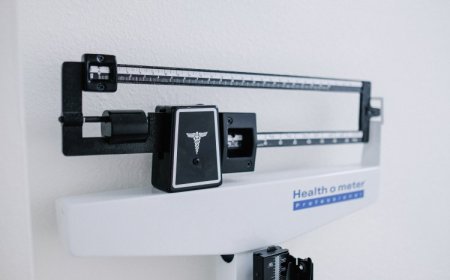
The largest public health study on obesity in...
Methodologists Oct 21, 2024 0 21295
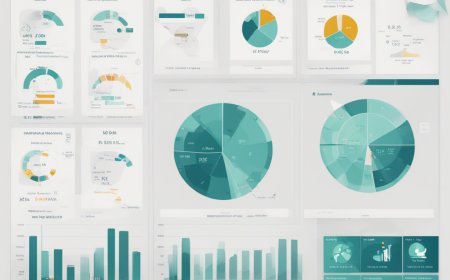
The World's Most Promising Survey-Based Healt...
Methodologists May 5, 2024 0 21731
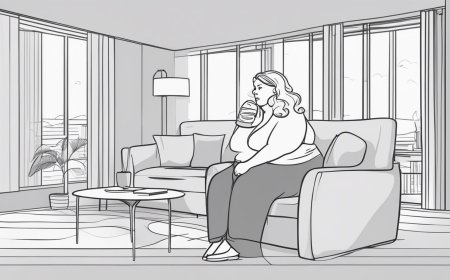
Researchers from Saudi Arabia emphasize the s...
Methodologists Jan 4, 2024 0 11470

New Study Highlights the Consumption Patterns...
Methodologists Dec 8, 2023 0 10133

Slimming the Gap: Lifestyle and Dietary Varia...
Methodologists Oct 30, 2023 0 31814

Unlocking the Power of Discourse Analysis
Methodologists Sep 30, 2024 0 10076

Demystifying Participatory Research: A Compre...
Methodologists Sep 19, 2024 0 5758

Leveraging Health Surveillance Systems to Tra...
Methodologists Aug 22, 2024 0 7689

Preparing for Hajj: Medical Requirements and ...
Methodologists Jul 23, 2024 0 7716

How the Fluid Moves Inside Tank Trucks
Methodologists Jan 29, 2024 0 6206

Why Should You Shift your car gear from D to ...
Methodologists Jan 27, 2024 0 6715


Quantum Mechanics: Understanding the Universe...
Methodologists May 31, 2023 0 4269

Applied Mathematics: Bridging the Gap between...
Methodologists May 28, 2023 0 6920

Choosing the Right Path in Criminology and Cr...
Methodologists Jul 24, 2023 0 7519

Understanding the Academic Specialty of Histo...
Methodologists Jul 22, 2023 0 6382

Social Work: Transform Lives, Impact Communities
Methodologists Jul 19, 2023 0 1232

Exploring the Intricate Connections Between P...
Methodologists Jul 18, 2023 0 2779

Dual Representation Theory: A Scientific Pers...
Methodologists Aug 6, 2023 0 11221

Trauma in Transition: The Science and Theorie...
Methodologists Jul 25, 2023 0 4323

How Trauma Shatters Our Worldview: Unmasking ...
Methodologists Jul 21, 2023 0 1500

The Origins of Trauma: A Detailed Examination...
Methodologists Jul 20, 2023 0 2063

Vitamin B1 (Thiamine): Its Importance, Food S...
Methodologists Aug 14, 2023 0 8330

Vitamin A: The Superhero Nutrient Your Body C...
Methodologists Aug 5, 2023 0 9057

Vital Vitamin E: Your Path to Wellness
Methodologists Aug 2, 2023 0 1203

Vitamin C: The Essential Nutrient for Health ...
Methodologists Jul 26, 2023 0 1615

The State of Quantum Computing in 2024: Innov...
Methodologists Dec 21, 2024 0 4066

How to Prepare for Your Menstrual Cycle Every...
Methodologists Dec 16, 2024 0 9587

Why Do Girls Get Periods? The Menstrual Cycle...
Methodologists Dec 15, 2024 0 9337

Why Your Chronic Diarrhea Won’t Stop — And Ho...
Methodologists Dec 8, 2024 0 21996

Innovative Strategies to Combat Traffic Conge...
Methodologists May 15, 2024 0 6723

Sharpen Your Communication Skills: The Impact...
Methodologists Apr 30, 2024 0 14762

Hidden Chemical Additives in Restaurant Food ...
Methodologists Apr 25, 2024 0 6642

New Study Reveals the Impact of Stretch-Focus...
Methodologists Jan 26, 2024 0 5619

Clostridium botulinum and Human Interaction: ...
Methodologists Mar 19, 2024 0 39499

Stuck in Place? The Surprising Power of Weigh...
Methodologists Jan 4, 2024 0 4413

Why We Sleep: The Intriguing Science Behind Y...
Methodologists Aug 20, 2023 0 8293

The ABC of Reproduction: Everything You Need ...
Methodologists Aug 13, 2023 0 8547

Unmasking the Silent Killer in Men: How Menta...
Methodologists Jul 18, 2023 0 1869

Essential Guide to Testicular Care: A Focus o...
Methodologists Jul 16, 2023 0 1285

Surviving the Storm: Unmasking the Realities ...
Methodologists Jul 8, 2023 0 7222

Understanding Men's Mental Health: Confrontin...
Methodologists Jul 5, 2023 0 4007

Body Mysteries for Kids: Journey Through the ...
Methodologists Jan 3, 2024 0 3712

Exciting World of Insects: Entomology for Kids
Methodologists Jan 2, 2024 0 3852

The Art of Engineering: Making and Breaking T...
Methodologists Jan 1, 2024 0 3348

Road Warriors: The Ultimate Vehicles for Post...
Methodologists Jul 14, 2023 0 285

Voices in the Void: Communication in a Post-A...
Methodologists Jul 14, 2023 0 327

Constructing Comfort in Chaos: Shelter Buildi...
Methodologists Jul 14, 2023 0 295

Finding Your Way After the End: Navigating th...
Methodologists Jul 14, 2023 0 177

Comprehensive Analysis of Lyrica's Effect: Fr...
Methodologists Dec 30, 2023 0 4413

Chronic Pain and Beyond: Physiological Effect...
Methodologists Dec 2, 2023 0 16257

The Physiology of Valium Use: From Initial In...
Methodologists Sep 12, 2023 0 13508

Hooked: The Truth Behind Addiction and the 10...
Methodologists Sep 4, 2023 0 397

Unlock the Power of Almonds: Nature's Remedy ...
Methodologists Sep 13, 2023 0 4953

Ashwagandha: The Herbal Supplement Bridging A...
Methodologists Aug 3, 2023 0 16193

The Many Faces of Lemon Balm: Exploring Its B...
Methodologists Jul 31, 2023 0 21493

Honokiol and Magnolia Bark: The Herbal Supple...
Methodologists Jul 31, 2023 0 3439

How 7-9 Hours of Sleep Can Shape Your Longevity
Methodologists Dec 29, 2023 0 10365

Faith, Family, and Friends: The Spiritual Pat...
Methodologists Dec 24, 2023 0 11488

Standing Strong: Integrating Physical Activit...
Methodologists Dec 23, 2023 0 14545

Sauna Sessions: A Warm Way to Ward Off Alzhei...
Methodologists Dec 22, 2023 0 11639

PCOS Girl: It's Time to Fight Back!
Methodologists Dec 25, 2023 0 6489
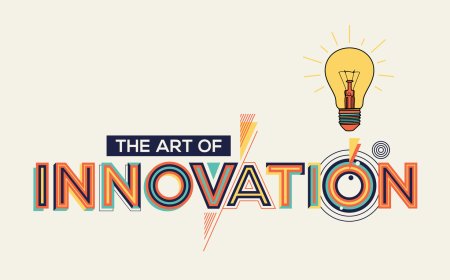
The Role of Interdisciplinary Collaboration i...
Methodologists Dec 21, 2024 0 5558
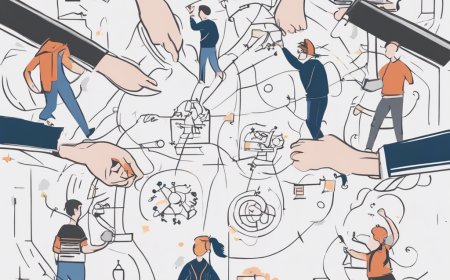
Strategies for Youth Development: A Positive ...
Methodologists May 31, 2024 0 7145

Hackathons: Superficial or Substantial for In...
Methodologists May 2, 2024 0 16458

Why is it unethical to clone myself?
Methodologists Mar 3, 2024 0 12016

The Role of Technology in Expanding Access to...
Methodologists Jun 21, 2023 0 6266

The Connection Between Mental Health and Phys...
Methodologists Jun 15, 2023 0 7248

Mental Health Education and Awareness - Empow...
Methodologists Jun 8, 2023 0 5899

The Impact of Mental Health on Social Inclusi...
Methodologists Jun 1, 2023 0 1959

A Comprehensive Guide to Data Governance
Methodologists Jul 9, 2023 0 3413

Playing with Fire: How Social Media Recruitme...
Methodologists Jul 2, 2023 0 15832

Embracing the Future: Data Governance in High...
Methodologists Jul 1, 2023 0 4576

Revolutionizing Research Data Governance: How...
Methodologists Jun 8, 2023 0 8188

Managing Employee-Related Scandals in Media C...
Methodologists Jan 18, 2024 0 6785

Protecting Corporate Reputation: Should Compa...
Methodologists Sep 4, 2023 0 10439

Job Security or Illusion: Are You Replaceable?
Methodologists Jul 15, 2023 0 3678

Are You Good Enough To Be a Leader?
Methodologists Jun 25, 2023 0 3184

The Impact of Digital Culture on Language Dep...
Methodologists Jul 17, 2023 0 6450

The Shift in Reading Culture: How Social Medi...
Methodologists Jul 16, 2023 0 5854

"The Evolution of Human Communication: Emojis...
Methodologists Jul 13, 2023 0 1894

The Revolution of Communication: Analyzing th...
Methodologists Jul 8, 2023 0 12527

The National Biotechnology Strategy: Saudi Ar...
Methodologists Jan 26, 2024 0 7974

Can a Wealthy Country Emerge as a Global Lead...
Methodologists Dec 18, 2023 0 9466

Driving R&D Initiatives with Effective Leader...
Methodologists Dec 9, 2023 0 4046
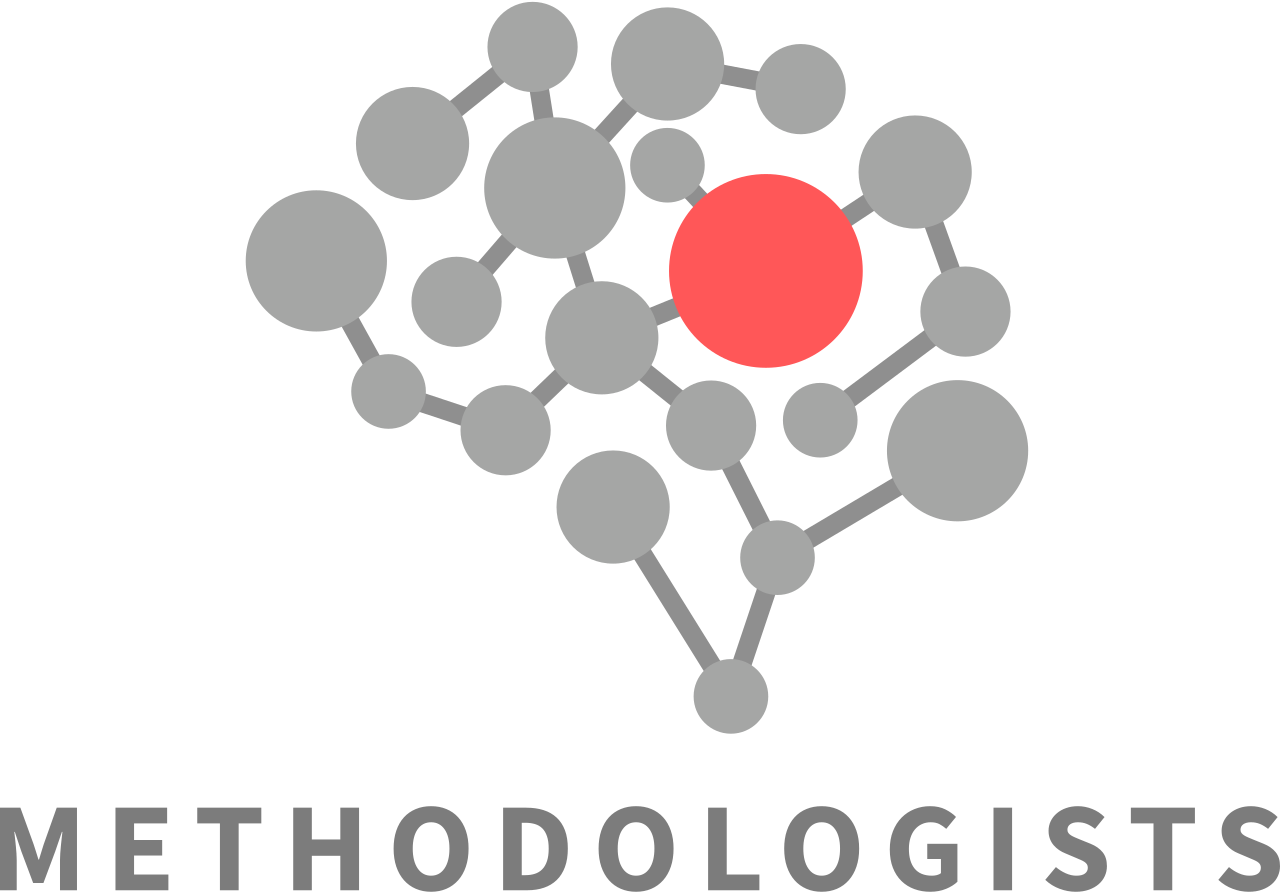
- Research Highlights
- Navigating the Social Sciences
- Guide to Vitamins and Minerals
- Trauma: From Concepts to Healing
- Exploring Engineering
- Unmasking Drug Addiction
- Mystery Science
- Essentials of Human Biology
- Women Health
- Nature's Remedies: Herbal Supplements
- Strategies to survive any apocalypse
- Men's Health Insights
- Science Behind Everyday Life
- Lifespan Determinants: Empirical Insights into the Science of Longevity
- Innovation Management
- Contemporary Organizational Behavior
- Research Data Governance in Universities and Research Institutions
- Hashtag vs Handshake
- 2023 World Mental Health Day
Join Our Newsletter
Join our subscribers list to get the latest news, updates and special offers directly in your inbox
Demystifying Participatory Research: A Comprehensive Guid
Discover the power of participatory research, a collaborative research methodology that actively engages communities in the research process and enhances social impact. this comprehensive guide breaks down the key concepts, history, and applications of participatory research, equipping researchers with the skills to involve communities and co-create knowledge effectively..
What is Participatory Research?
Key concepts in participatory research, the origins of participatory research, approaches to participatory research, applications of participatory research in research.
- Qualitative Research
- Methodology
- Research Methods
Exploring Autoethnography: A Comprehensive Guide
What's your reaction.

Related Posts

Discover the Hidden Truth: How Researchers' Personal Bi...
Methodologists May 19, 2023 0 1385

The Innovation Ambition Matrix: A Strategic Tool for Or...
Methodologists Oct 27, 2023 0 6443
Popular Posts

Why Your Chronic Diarrhea Won’t Stop — And How SIB...

Exploring Narrative Research: A Comprehensive Guid...
Methodologists Sep 14, 2023 0 20900

Ethnography: A Comprehensive Guide for Qualitative...
Methodologists Sep 11, 2023 0 11117

How to Prepare for Your Menstrual Cycle Every Mont...

Why Do Girls Get Periods? The Menstrual Cycle Expl...
Recommended posts.

Shedding the Weight, Adding the Years: How Obesity...
Methodologists Dec 4, 2023 0 7889

Revolutionizing Research Collaboration: Emerging T...
Methodologists Dec 2, 2023 0 6326

Applying the Scientific Method in Innovation Manag...
Methodologists Nov 1, 2023 0 13689

The Methodologists - Science PodCasts
Methodologists Jul 26, 2023 0 372
Popular Tags
- Mental Health
- behavioral science
- weight loss
- MENTAL HEALTH IS A UNIVERSAL HUMAN RIGHT
This site uses cookies. By continuing to browse the site you are agreeing to our use of cookies.

IMAGES
COMMENTS
Participatory research (PR) is the co-construction of research between researchers and people affected by the issues under study (e.g., patients, community members, community health professionals, representatives of community-based organizations) and/or decision makers who apply research findings (e.g., health managers, policymakers, community leaders).
Mar 27, 2012 · The NIH considers Community‐Engaged Research (CEnR), including Community‐Based Participatory Research (CBPR), to be the T3‐T4 tier of translational research; that is ensuring discoveries are translated into policies at the practice and community level. 2 CEnR calls for the engagement of communities in the research process. 5 This spans ...
May 23, 2022 · The Community-Based Participatory Research Conceptual Model developed by the University of New Mexico Center for Participatory Research (UNM-CPR) and University of Washington’s Indigenous Wellness Research Institute (UWIWRI) provides a conceptual evaluation model that focuses on contexts, group dynamics, research and intervention designs, and ...
Jul 21, 2020 · This article serves as an introduction to participatory research methods, including an overview of participatory research, terminology across disciplines, elements that make a research method participatory, and a model detailing the choice points that require decisions about which tools and methods will produce the desired level of ...
Participatory Action Research: A Toolkit 4 CONTENTS 1. Introduction 5 2. November 2022 and first published in June 2023.The 8 Stages of Participatory Action Research 8 3. The Participatory Action Research wheel: An A to Z of words that meaningfully An online version of this toolkit, including videos, will be represent PAR available at 16 4.
With participants as co-researchers, it is needed that they develop research skills: learn about research ethics such as consent, anonymity, respect for the respondents etc.; depending on the research, other valuable skills are for example photography, developing and selecting questionnaires or interview questions, interview skills and analyses.
Nov 16, 2024 · What this study adds. This study draws on existing literature, frameworks, and embedded and tacit knowledge from members of the ‘The Accountability and Responsiveness in Informal Settlements for Equity’ research consortium to set out seven core competencies and conditions that community-based participatory research programmes could use to strengthen ‘soft’ and ‘hard’ skills of all ...
4 days ago · Participatory health research requires the active involvement of diverse, multidisciplinary stakeholders from patients to health professionals. These stakeholders are often required to attain new research skills to actively participate, while researchers themselves must prove equally capable of gaining new skills and knowledge from practice.
Despite having experience with CBPR, many respondents did not have the comprehensive package of CBPR skills, reporting a need for training in a variety of CBPR skill sets. Further, the apparent mismatch between the need for mentors and availability in this sample suggests an important area for devel …
Sep 19, 2024 · Discover the power of participatory research, a collaborative research methodology that actively engages communities in the research process and enhances social impact. This comprehensive guide breaks down the key concepts, history, and applications of participatory research, equipping researchers with the skills to involve communities and co-create knowledge effectively.